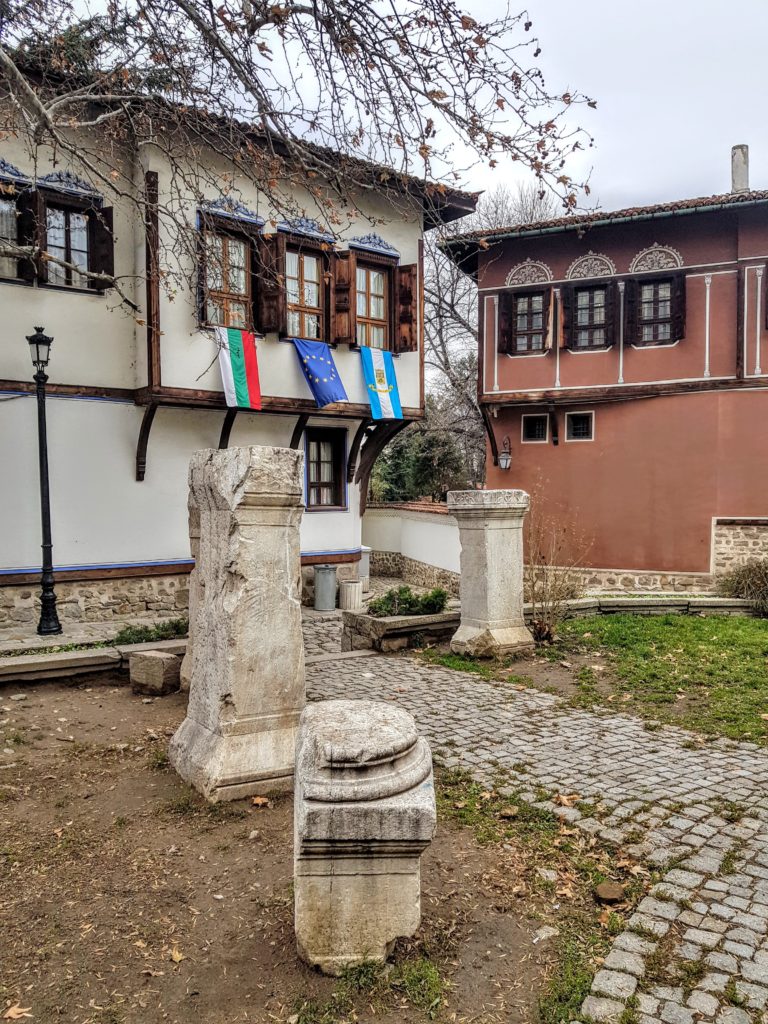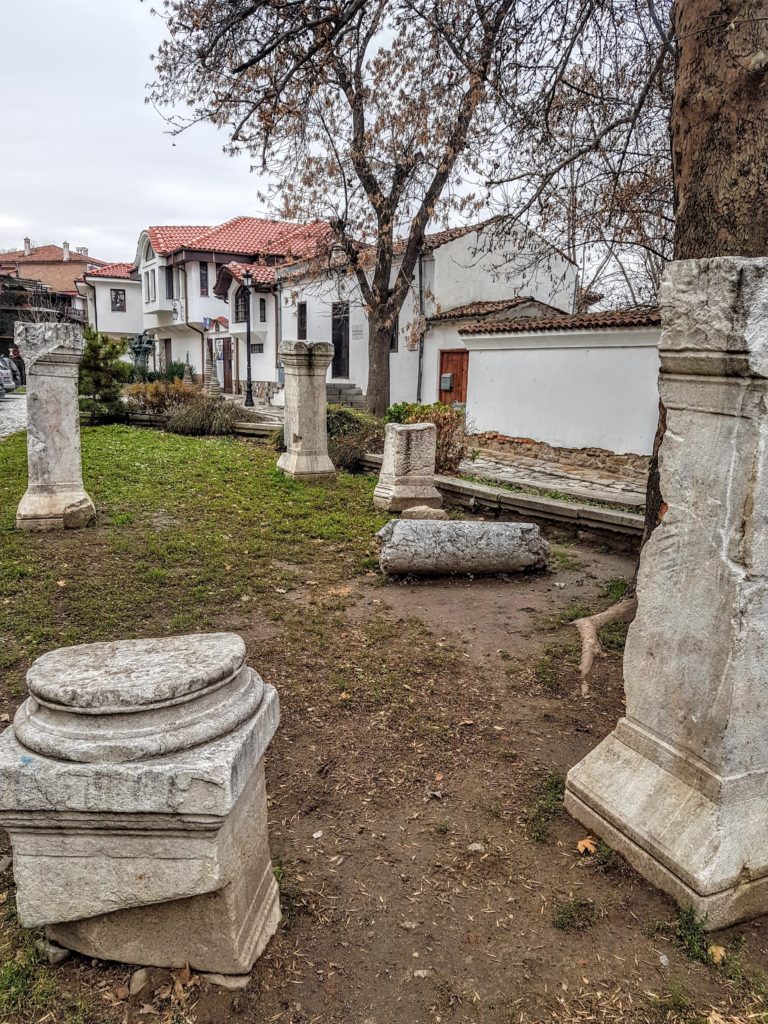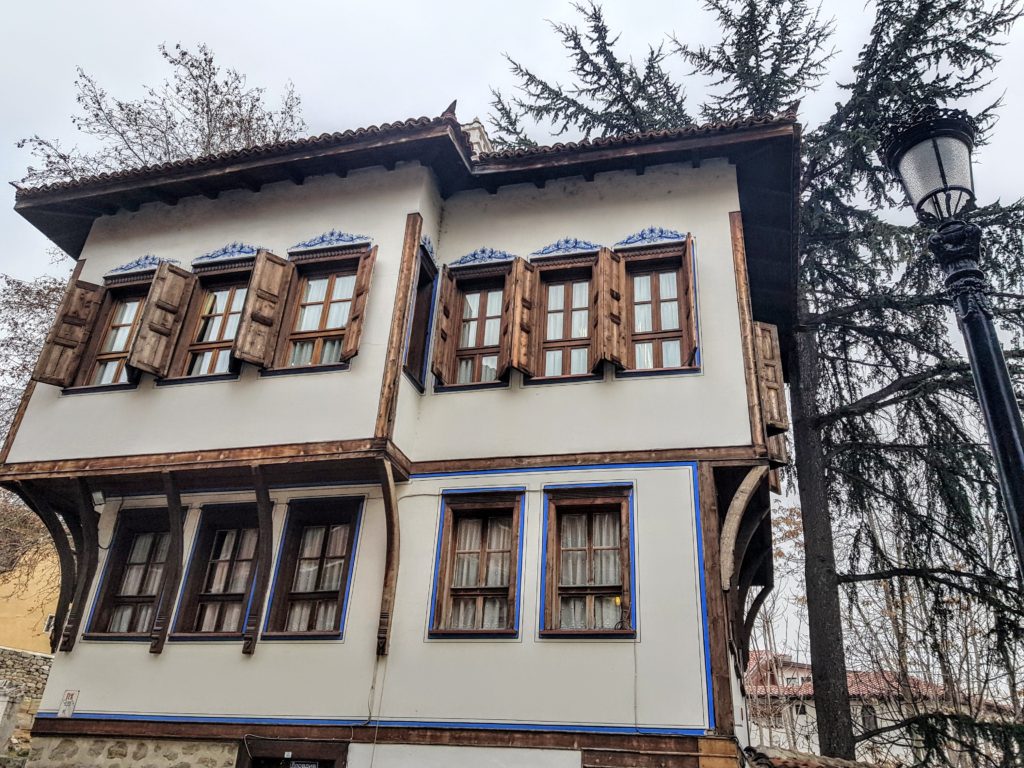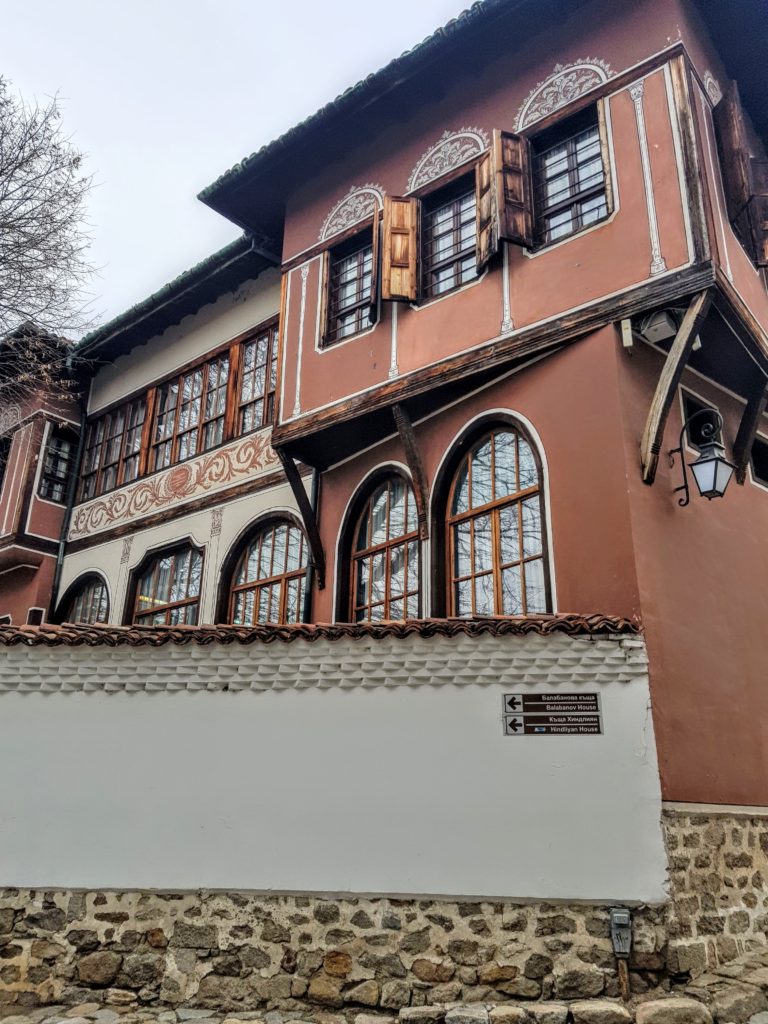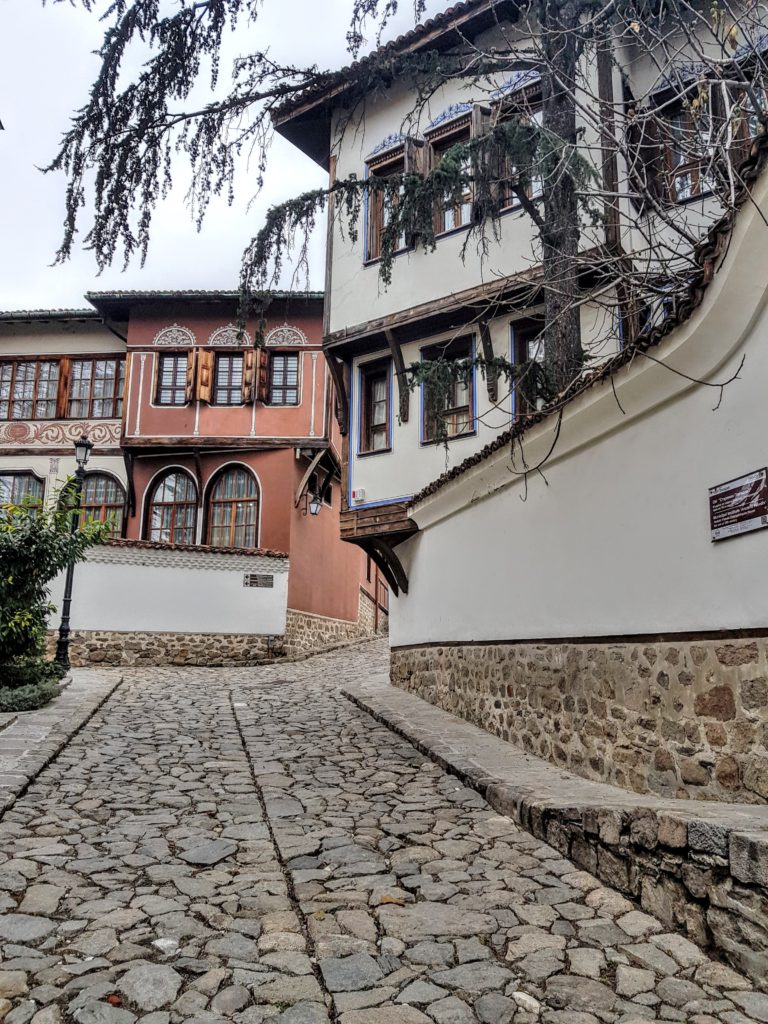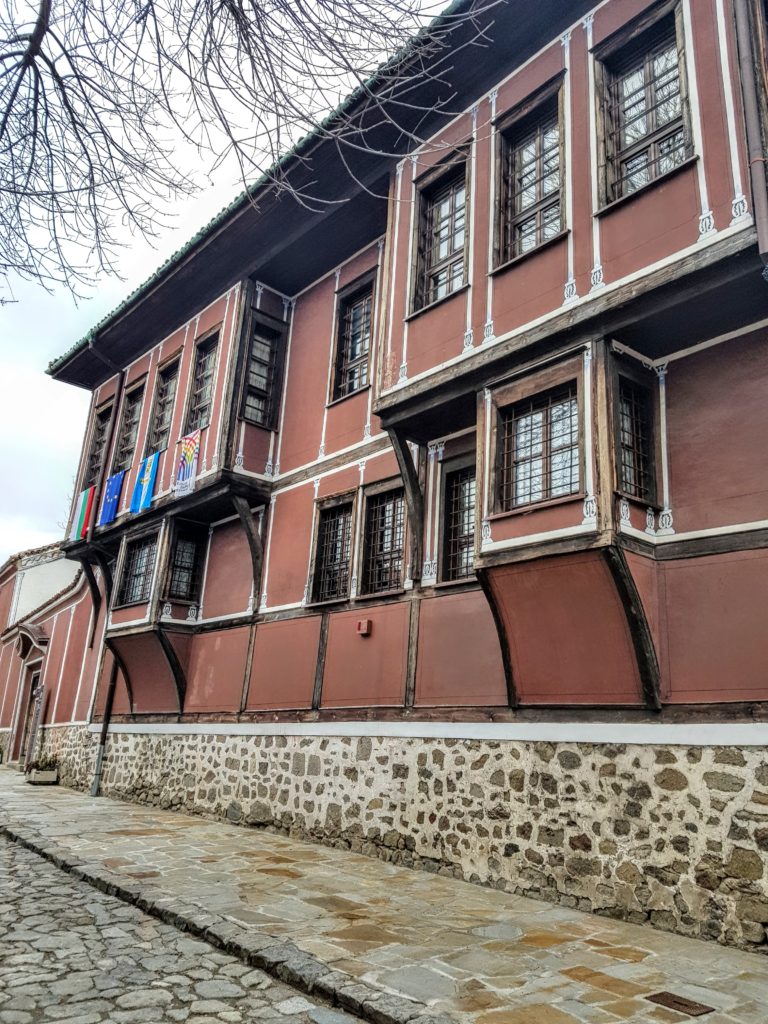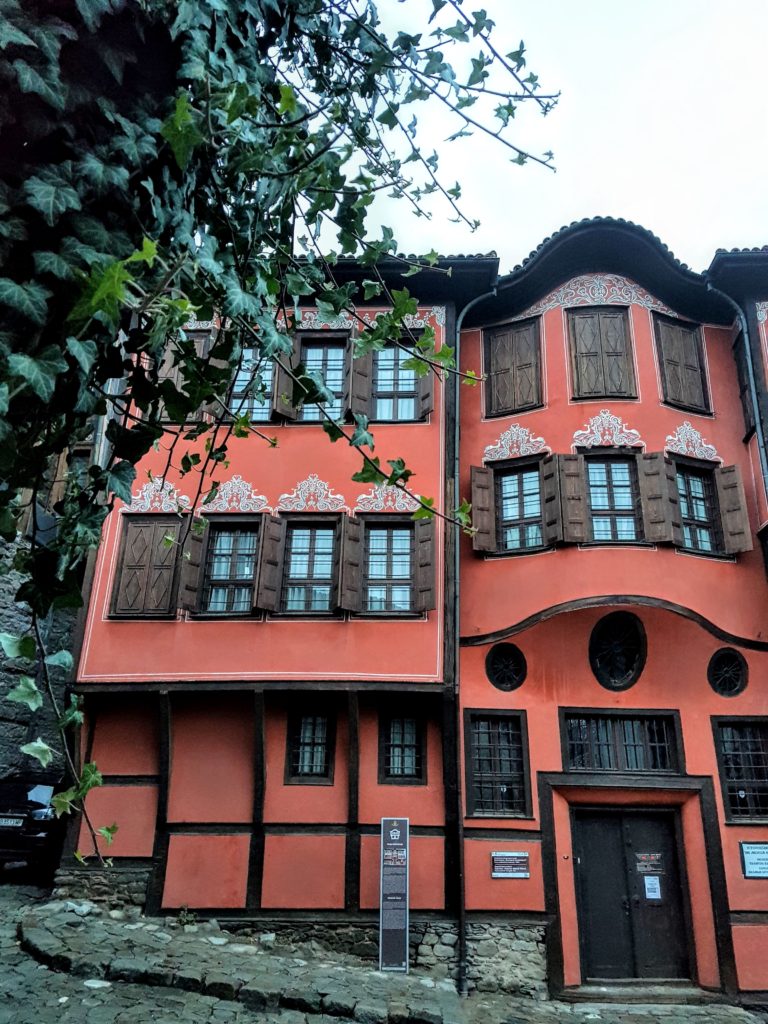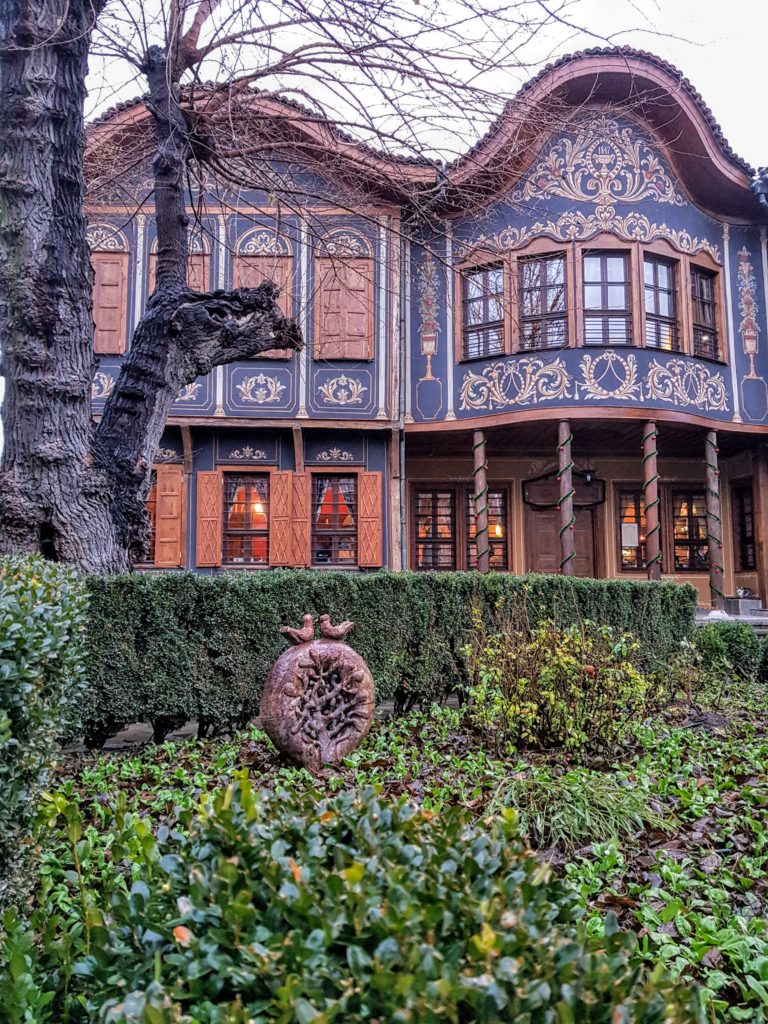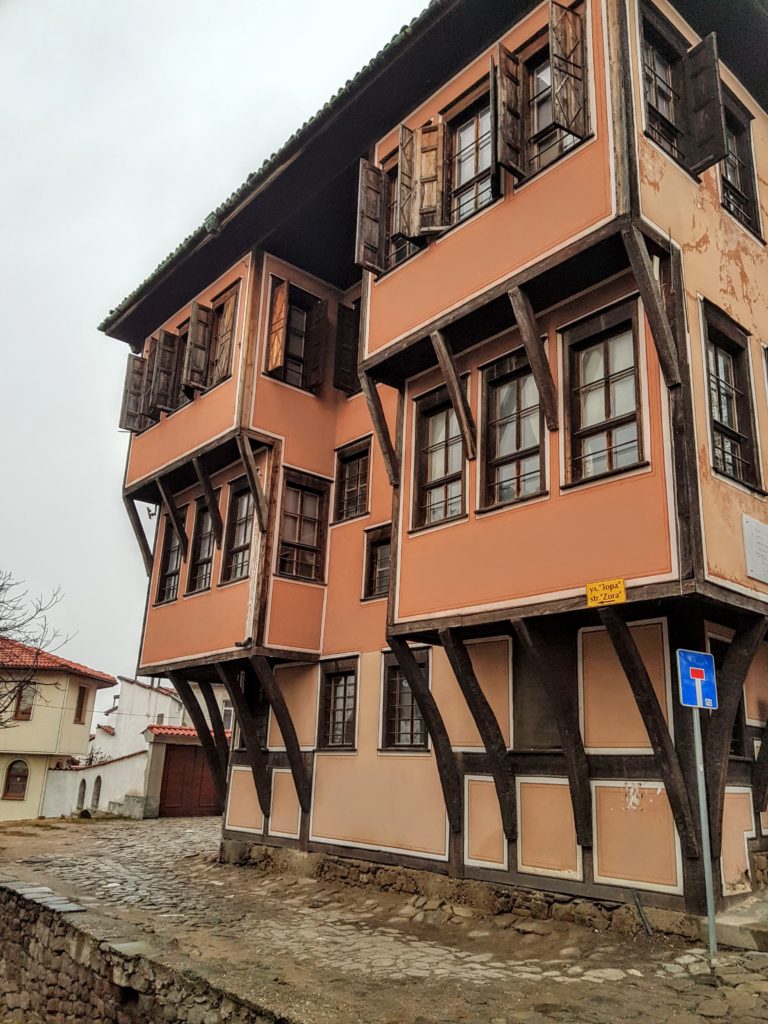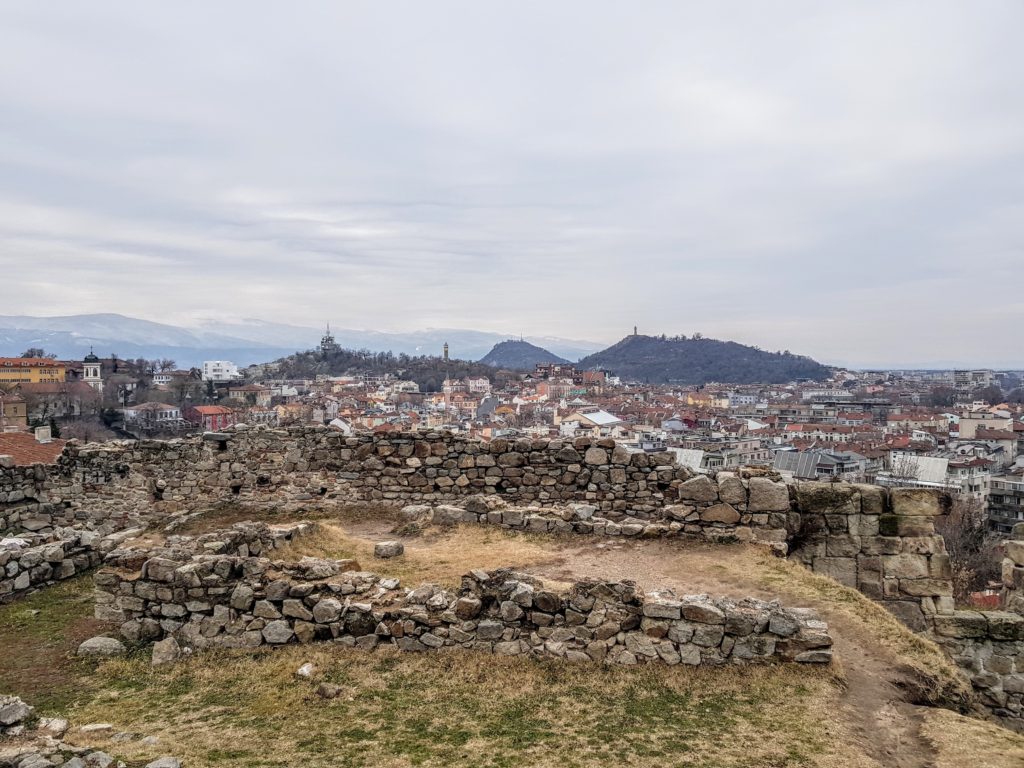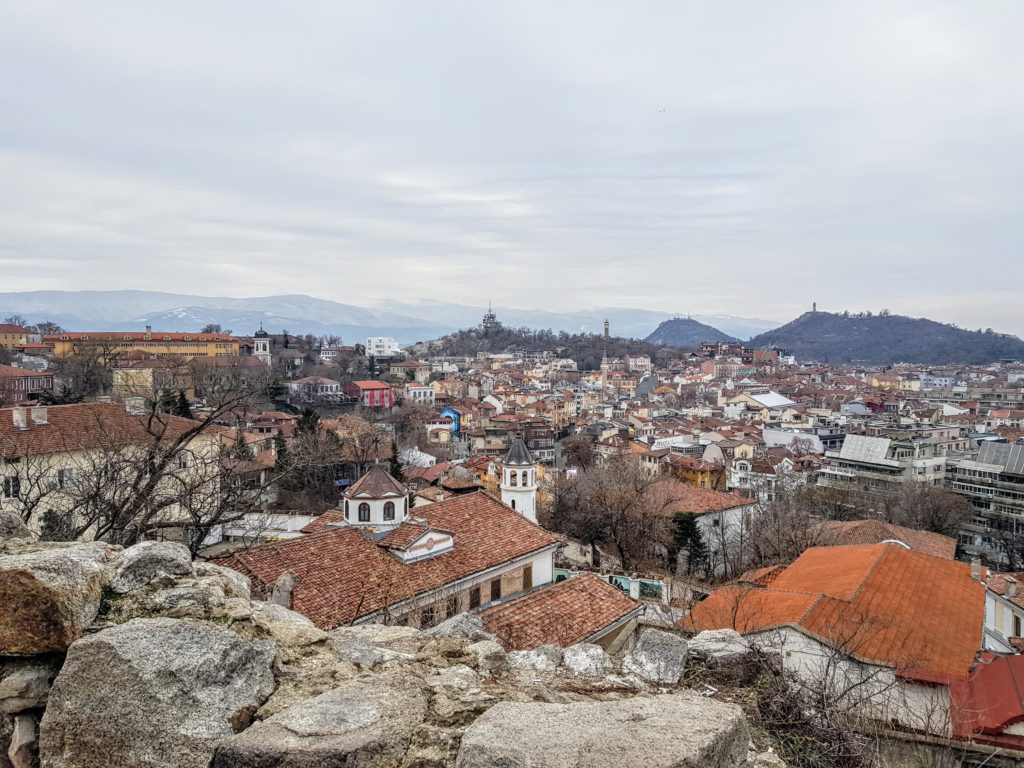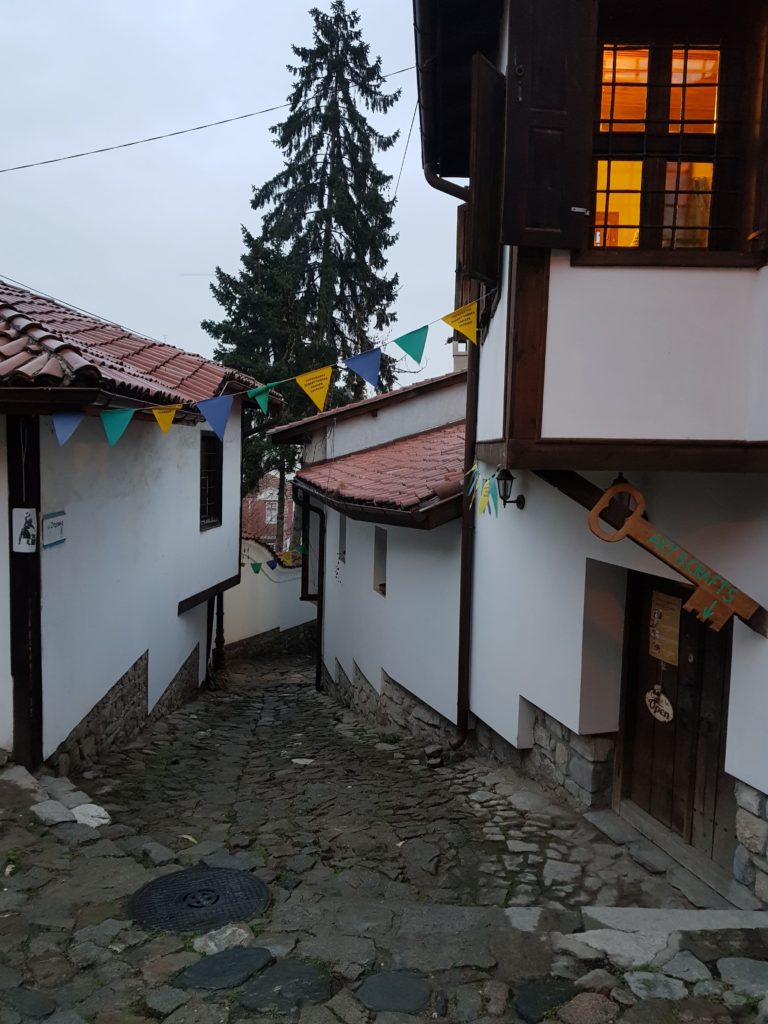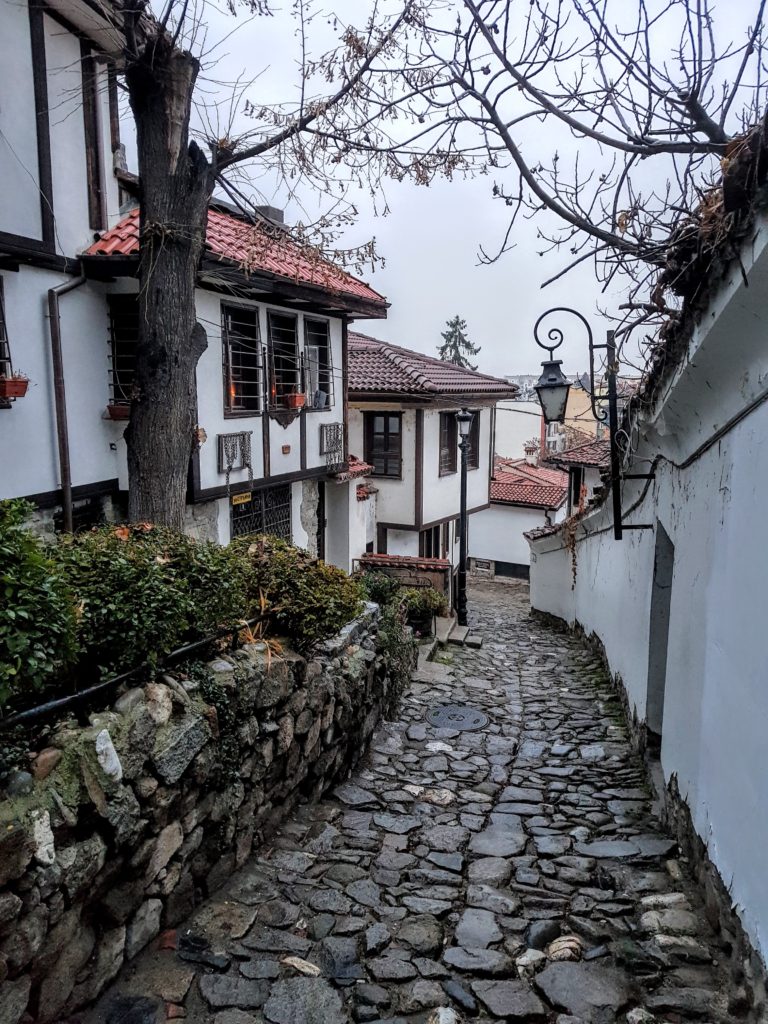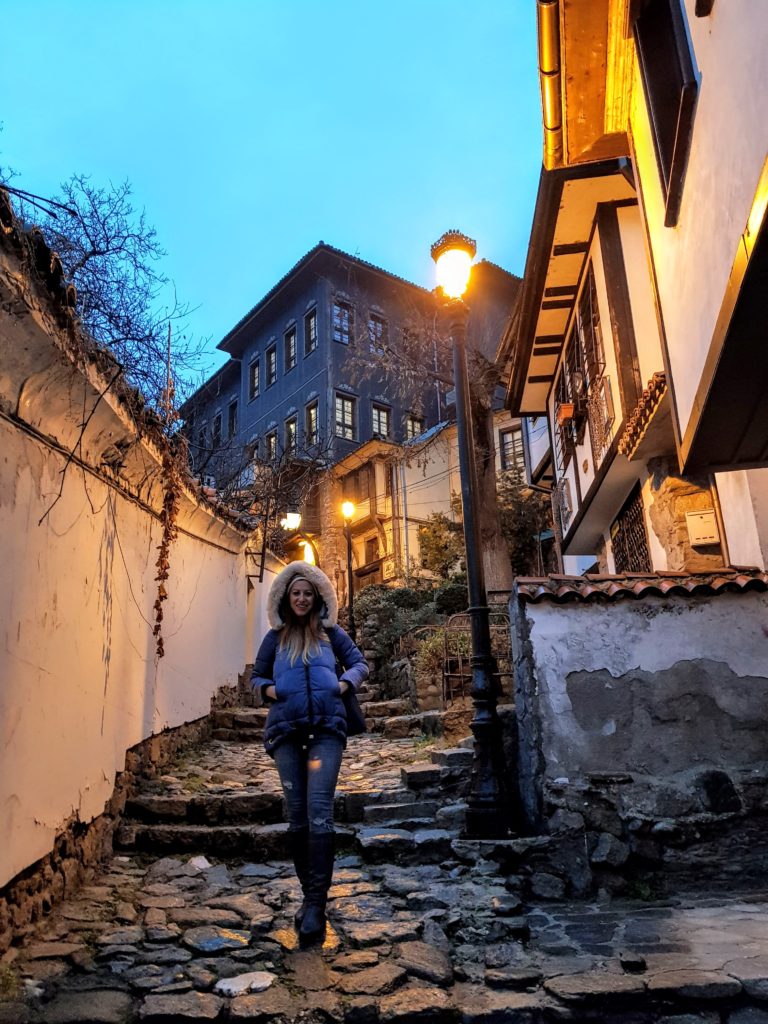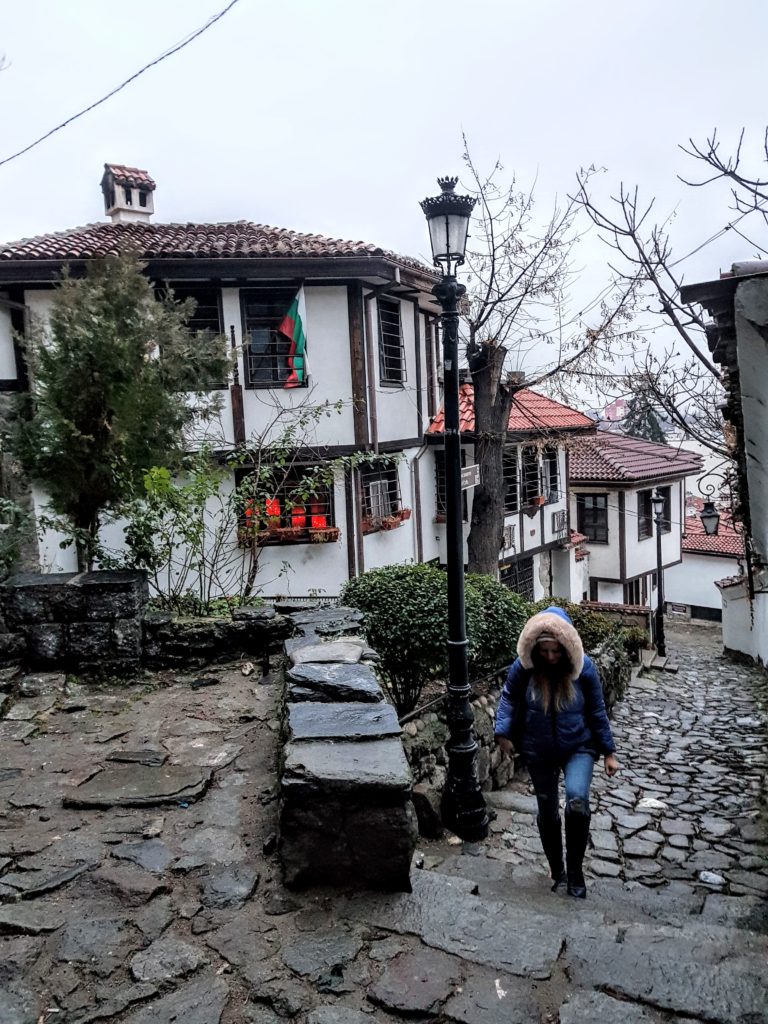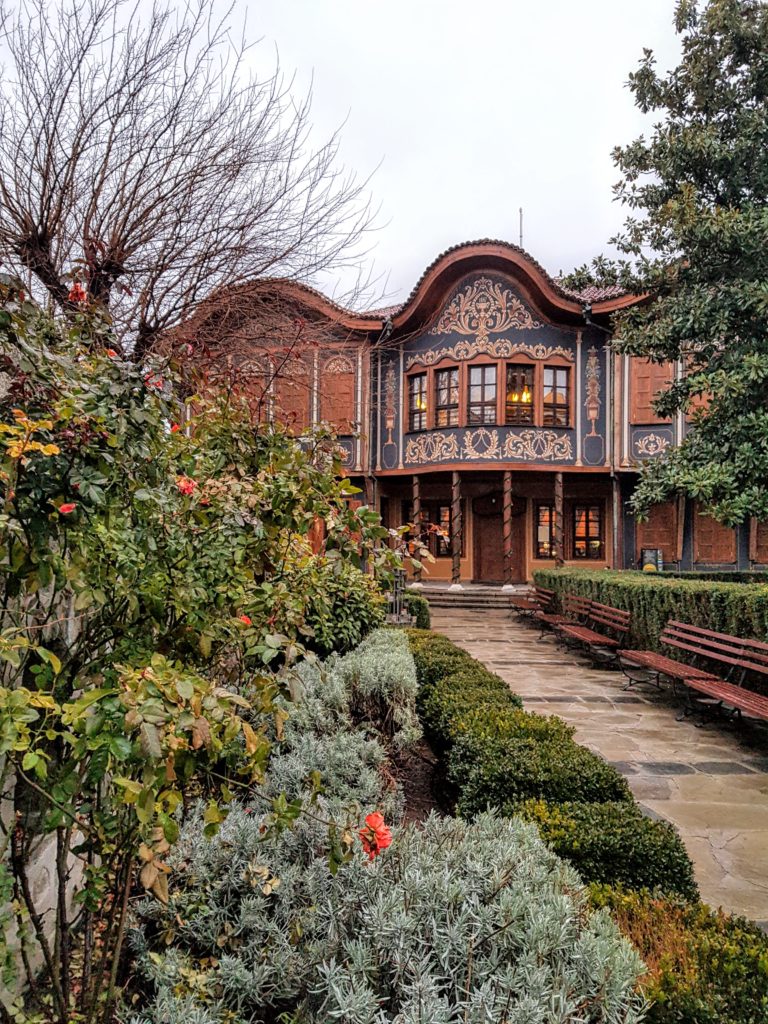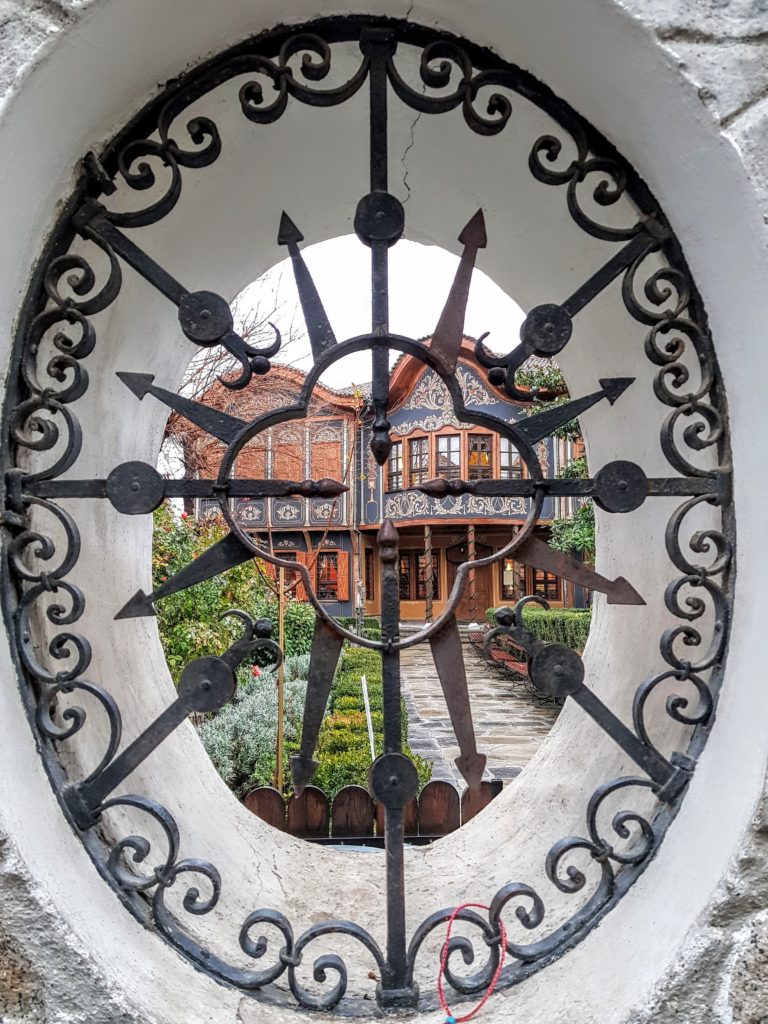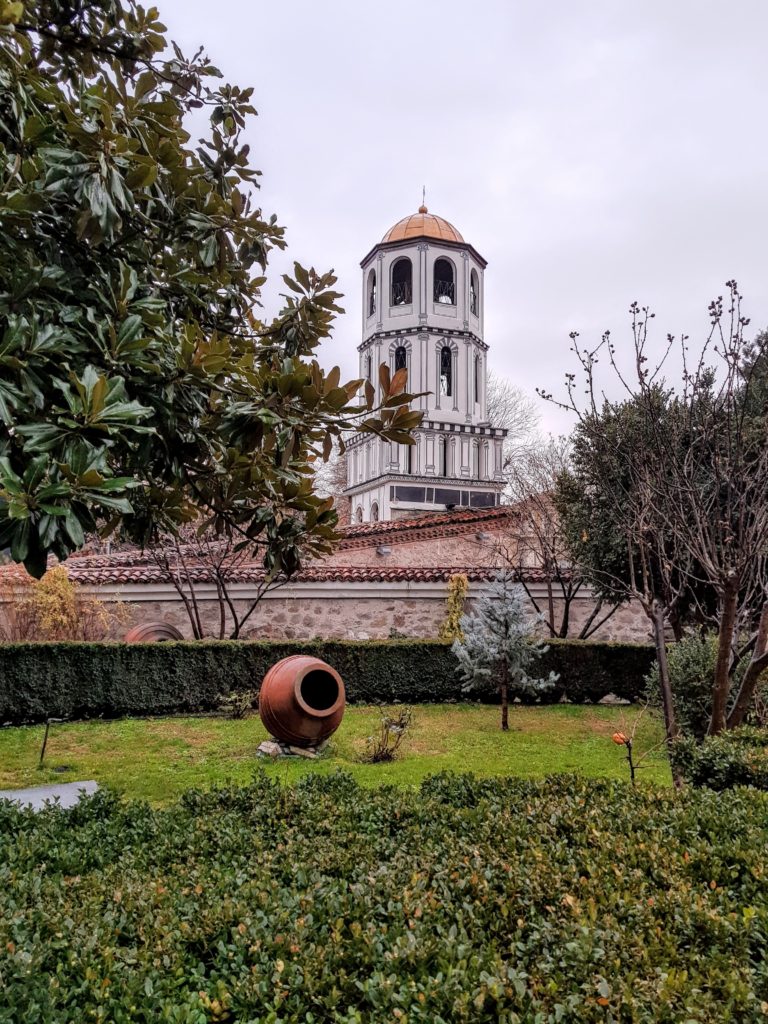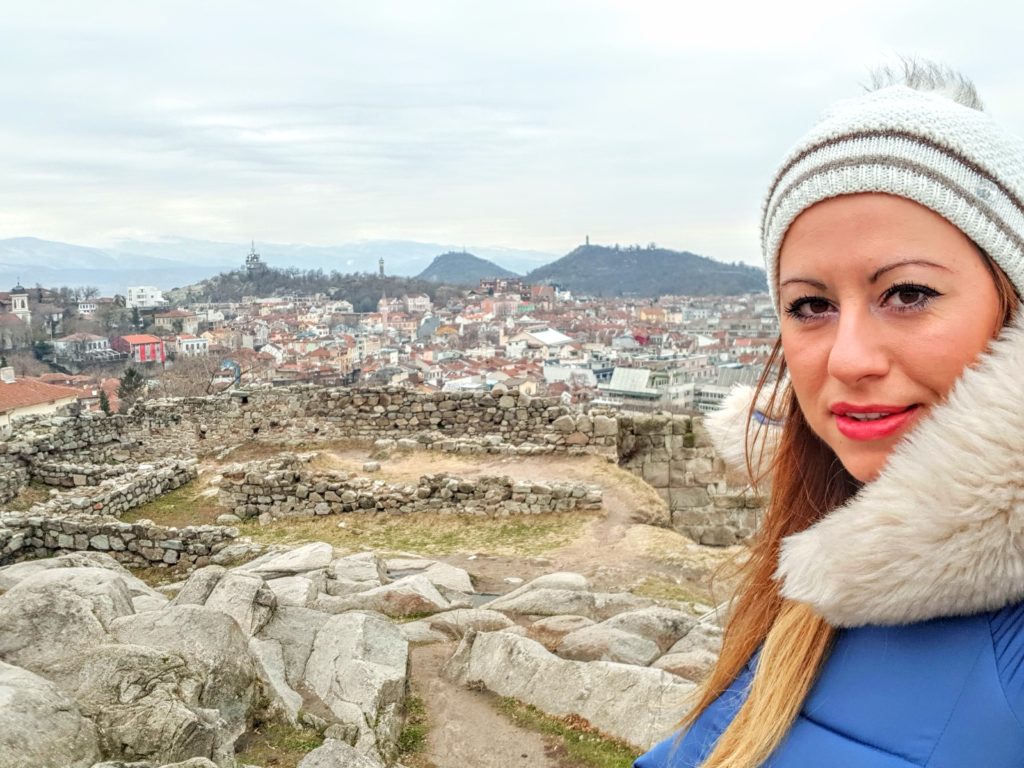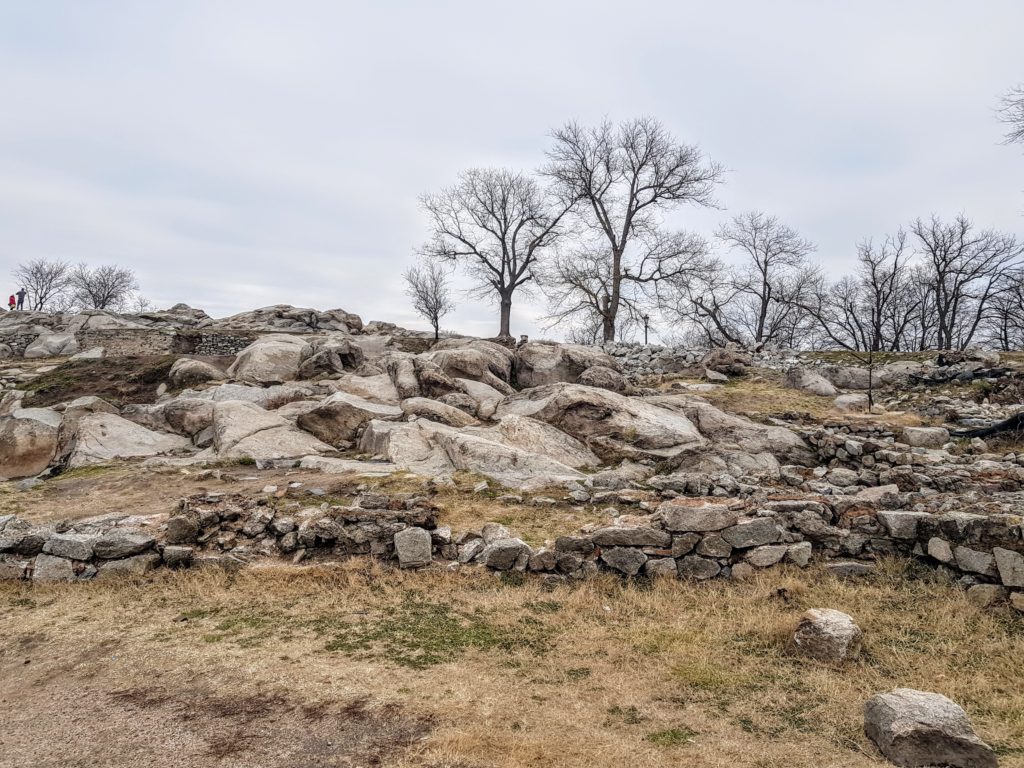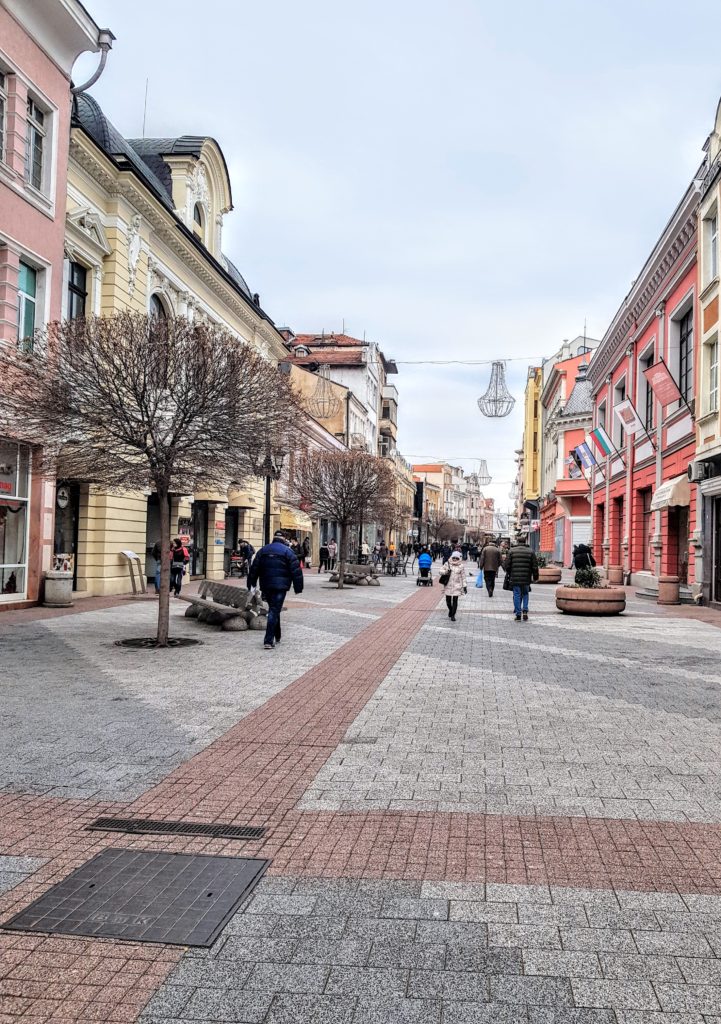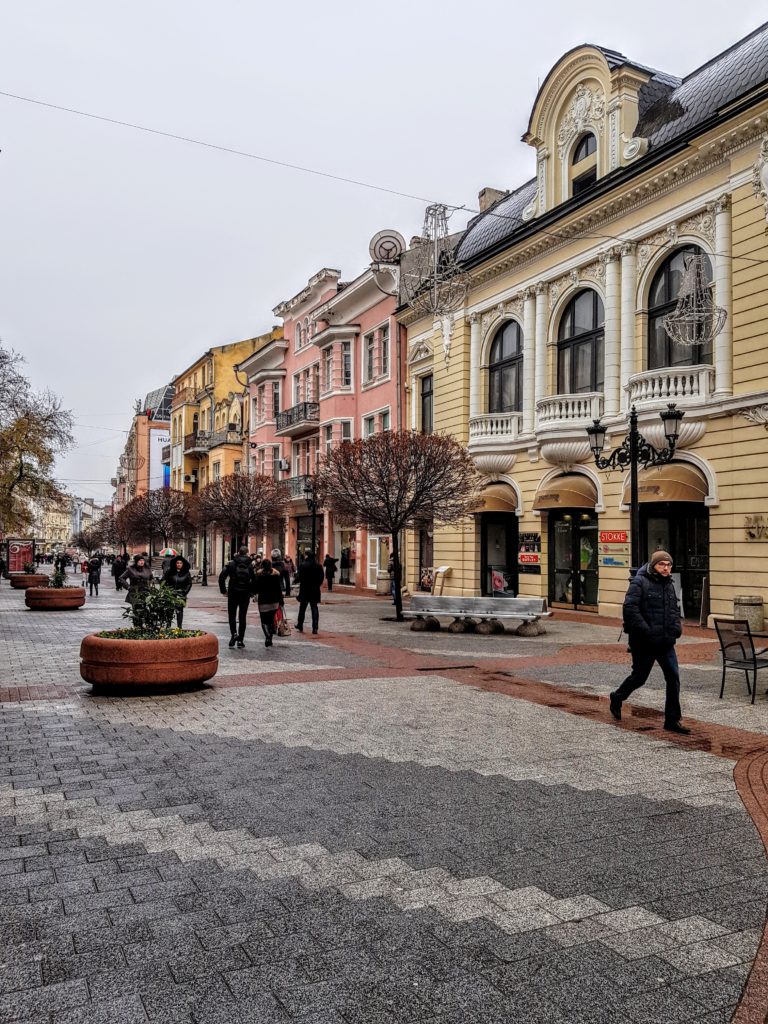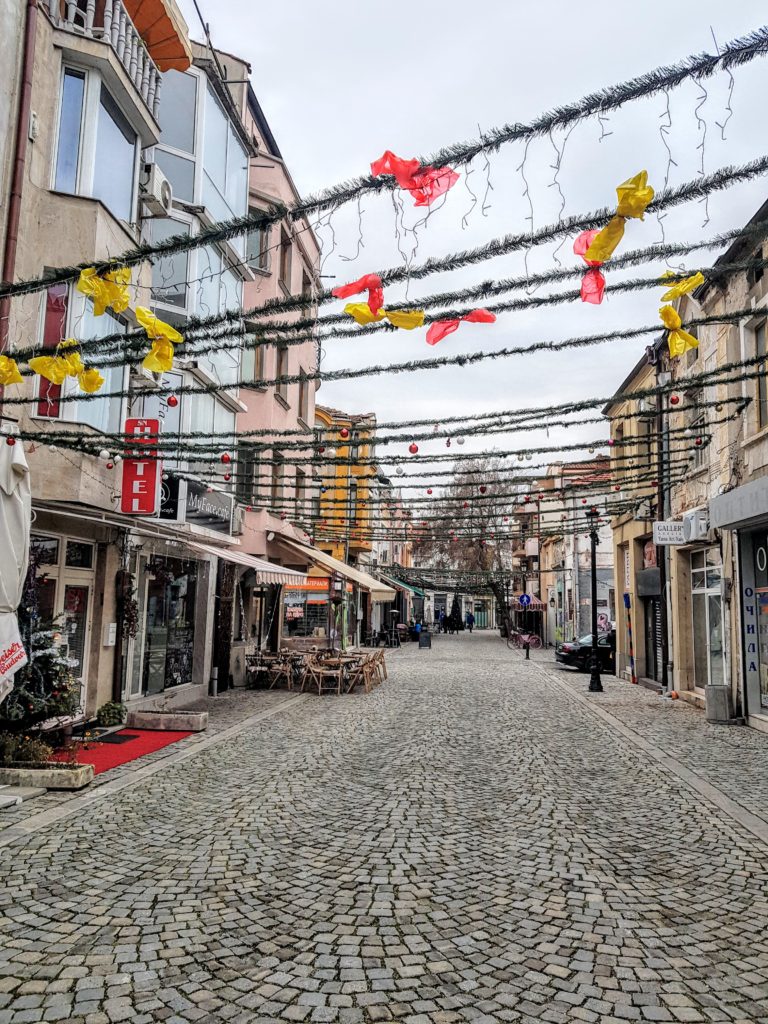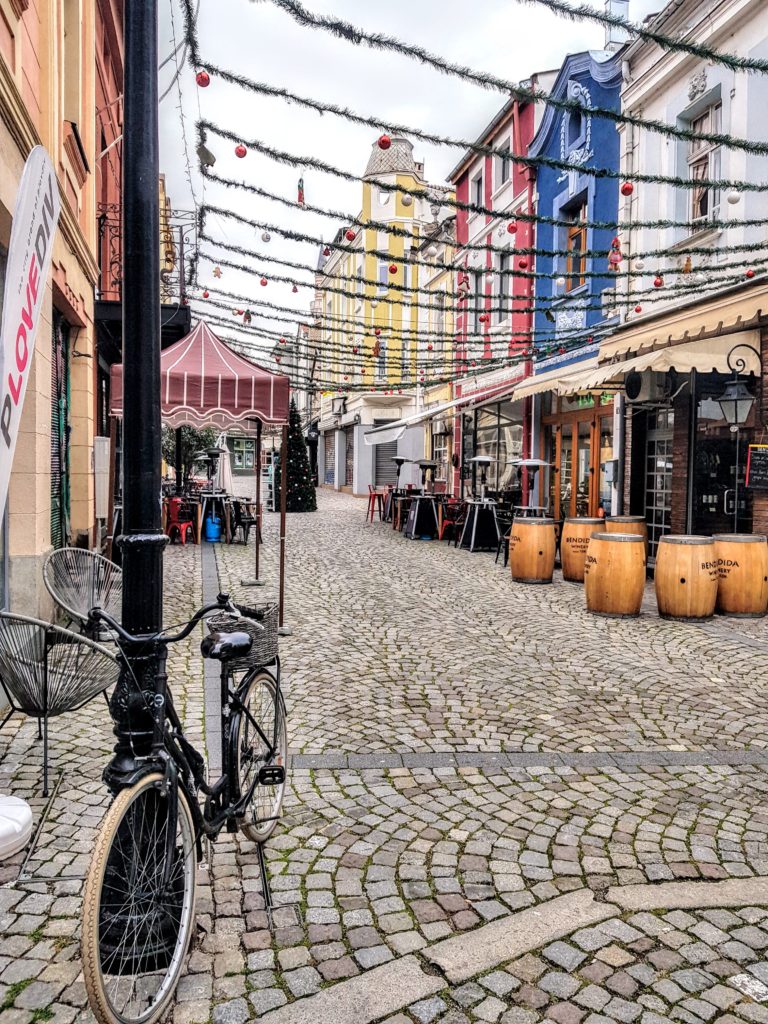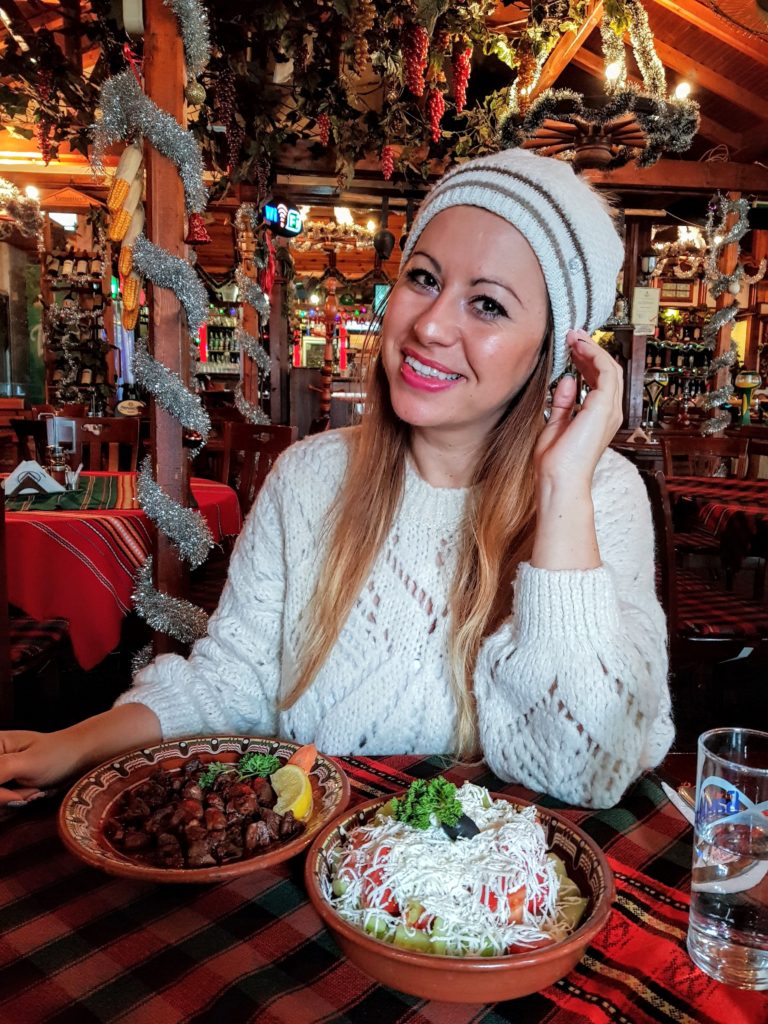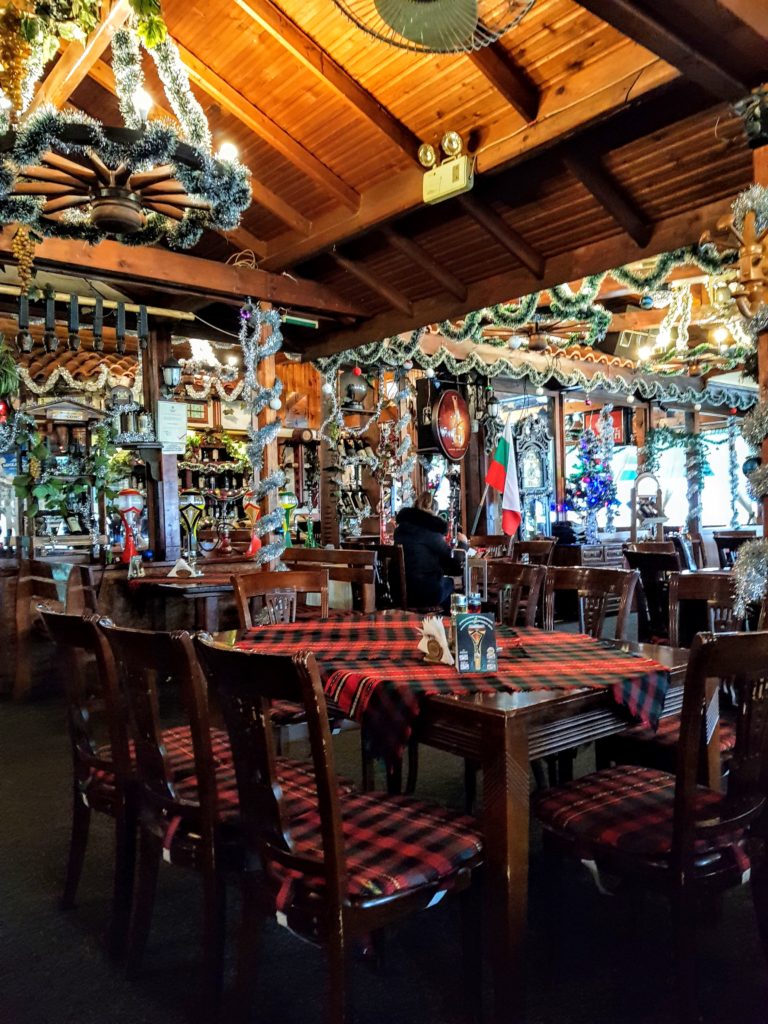Plovdiv, Bulgaria – what to visit
Hey hey! Today’s post will take us to my beautiful country Bulgaria. Or more specific to one of my favorite cities – Plovdiv. I always share with you my adventures travelling abroad, but the truth is that we do have very unique places here in Bulgaria as well. As I have a lot of international friends (and hopefully readers), I would like to show them what my country could offer. Let’s find together what to visit when in Plovdiv.
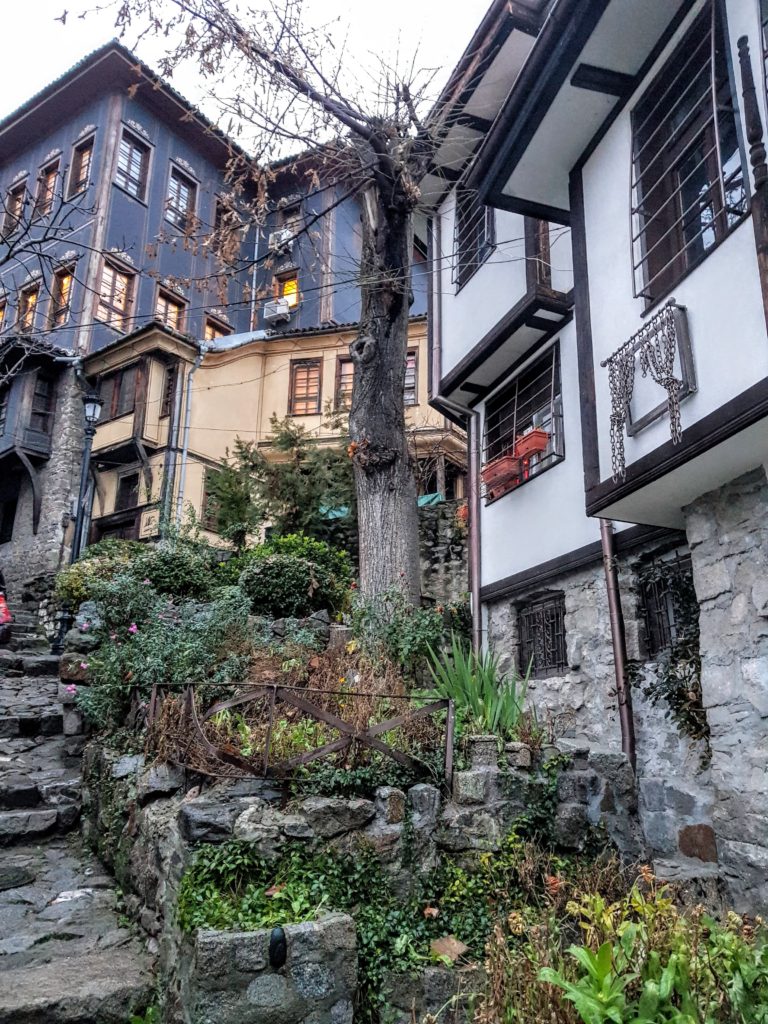
My Christmas vacation started earlier than expected and I decided to visit a dearest friend of mine and combine work with pleasure. By work I mean exploring the city and gathering information and pictures for the blog.
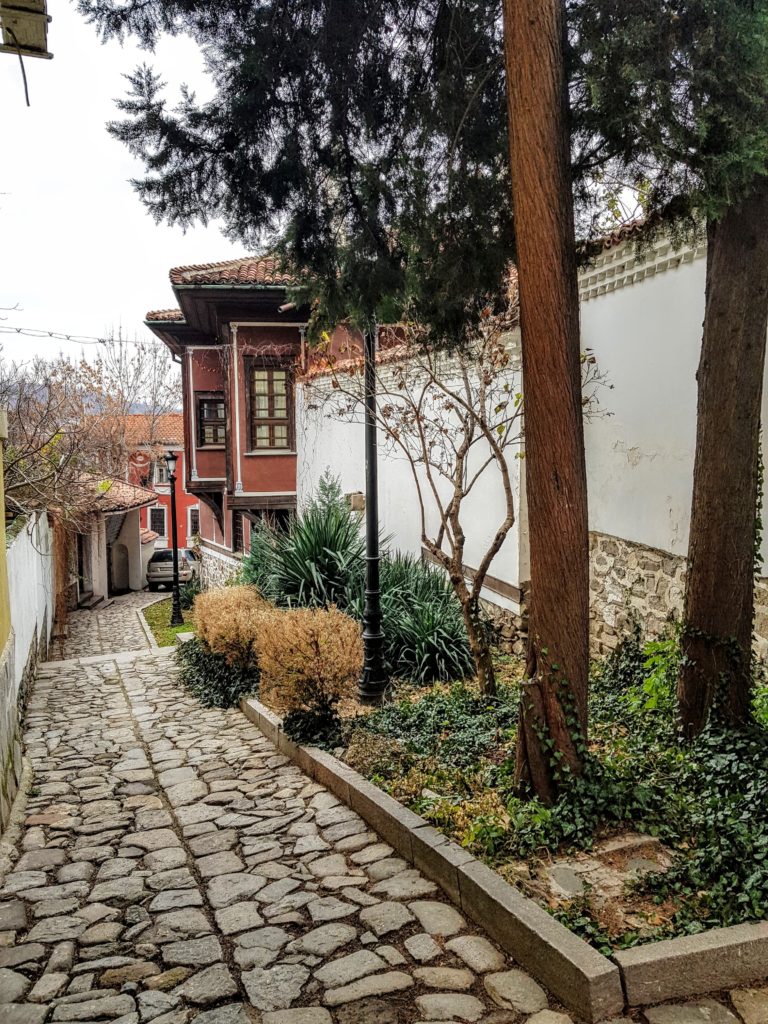
If you want to do a day trip to Plovdiv here you can find some suggestions what to visit and do for 24h (or more if you have the time).
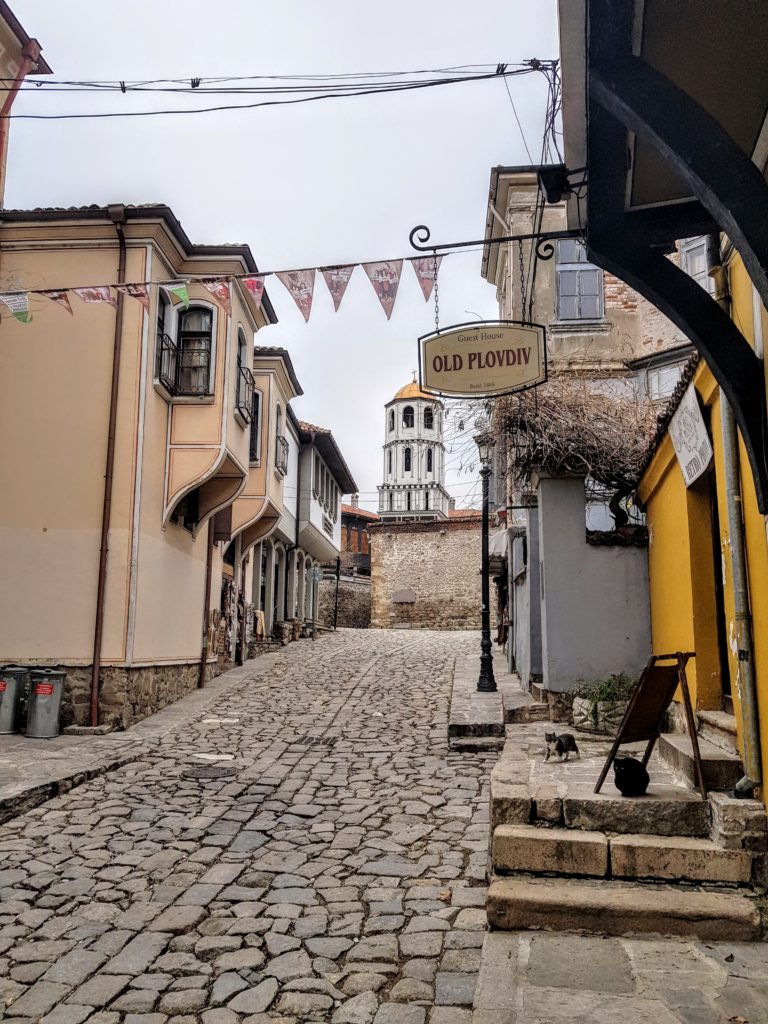
But before starting let me give you some tips:
- Transport:
- Plovdiv has its own airport so you can arrive to the city directly by plane
- If you come from Sofia you can use bus, train or rent a car. I travelled by bus, one way ticket costs 9.50 levs (5 euros) and it takes 2h to reach the city. Here is the transportation company that I used (it is the cheapest one, the rest charge 14levs for the ticket).
- To move around the city you can use taxi or buses. The city center is not that big so you can easily walk by foot. Using a taxi is also quite cheap.
2. Accommodation – you can rent a room in a hotel, a guest house or AirBnb appartment. My recommendation is to rent something in the city center because most of the interesting spots are located there and it easy to walk around and visit them all. If you want more authentic experience you can stay in a guest house in the Old town.

3. Our currency is called Bulgarian lev (1 euro=2lv), you can pay by card as well
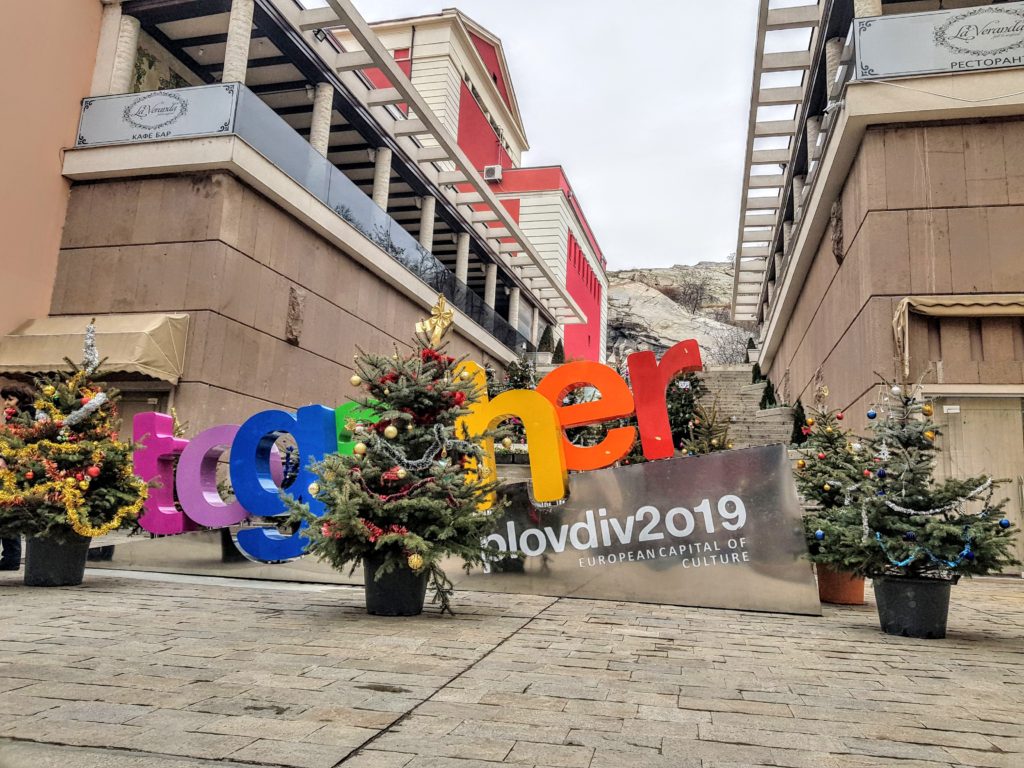
The city of Plovdiv was ranked 6th amongst the oldest living cities in the world and the first in Europe by the Daily Telegraph. Plovdiv is the second-largest city in Bulgaria after Sofia. What was originally a Thracian settlement evolved into a bustling Roman city.Over the centuries Plovdiv has been called Eumolpia, Trimontium, and Paldin. During most of its recorded history, Plovdiv was known in the West by the name Philippopolis (Greek: Φιλιππούπολις; Turkish: Filibe; “Philip’s Town”) after Philip II of Macedon conquered the city in the 4th century BCE.
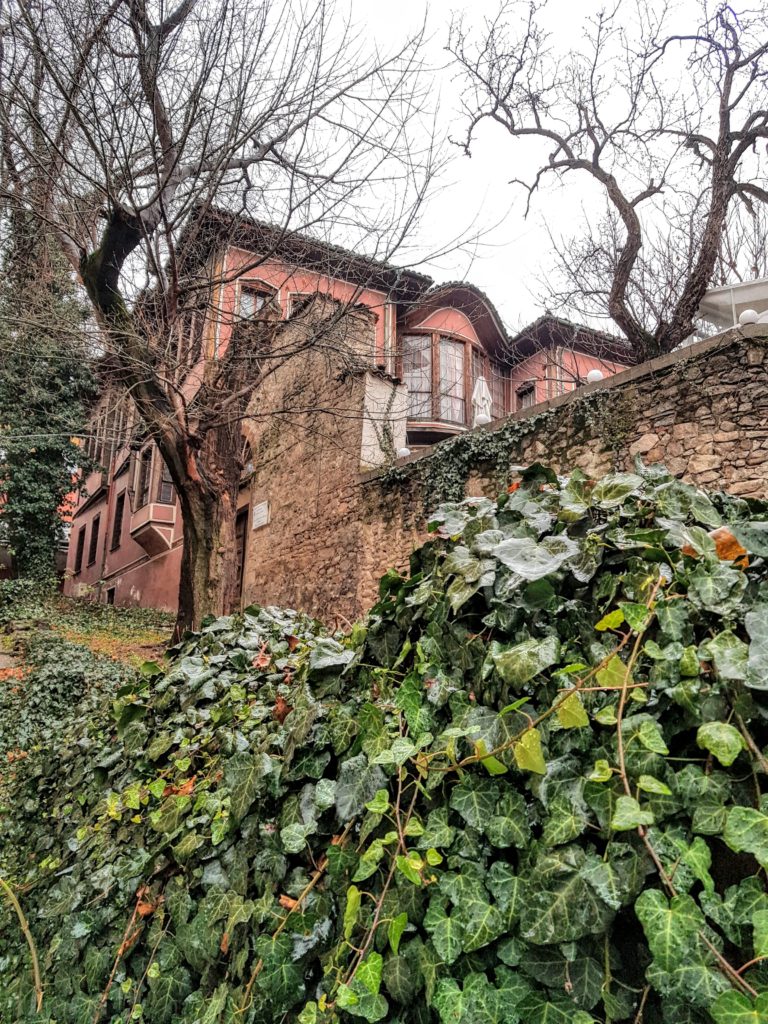
Plovdiv is situated in a fertile region of south-central Bulgaria on the two banks of the Maritsa River. The city has historically developed on seven syenite hills, some of which are 250 metres (820 feet) high. Because of these hills, Plovdiv is often referred to in Bulgaria as “The City of the Seven Hills”.
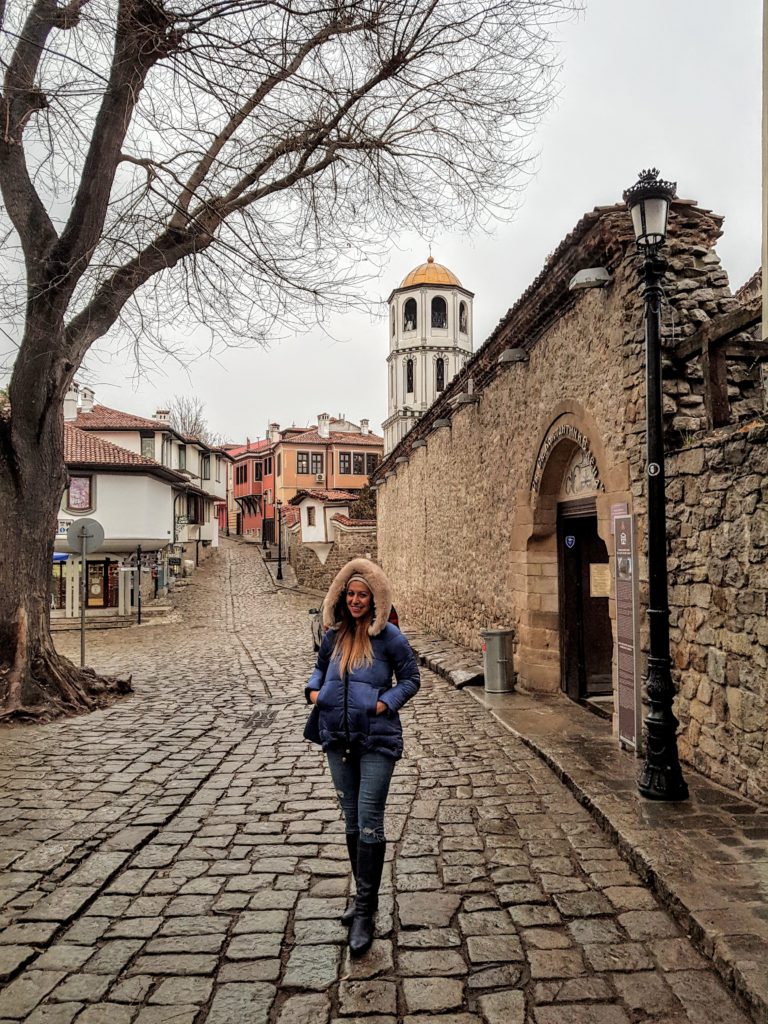
On 5 September 2014, Plovdiv was selected as the Bulgarian host of the European Capital of Culture 2019.
Here is my list of the 12 most interesting places to visit:
1.The ancient Roman theater – One of the world’s most intact Ancient theatres, this building is still in use almost 2000 years after it was constructed. There’s capacity for up to 7000 here and the structure cuts into the side of Taksim Tepe, one of Plovdiv’s seven hills, and as you step down the slope towards the terraces the views of the city and the Rhodope Mountains behind are astounding. The theatre was only rediscovered in the 1970s after a landslide had taken place on the hill.
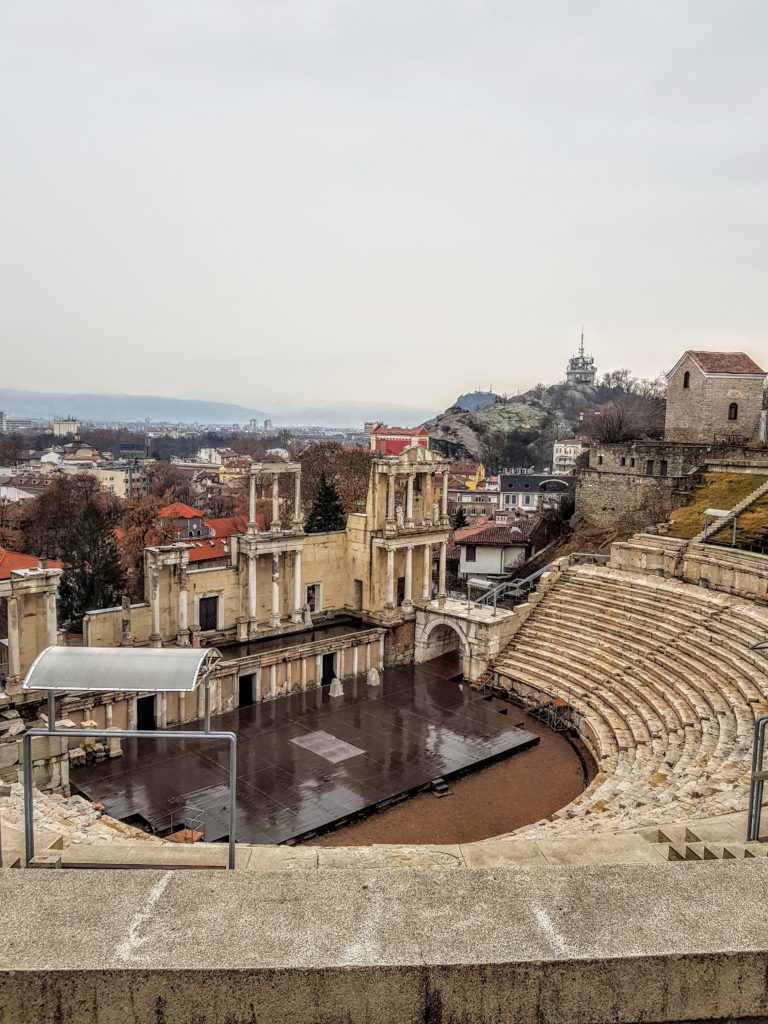
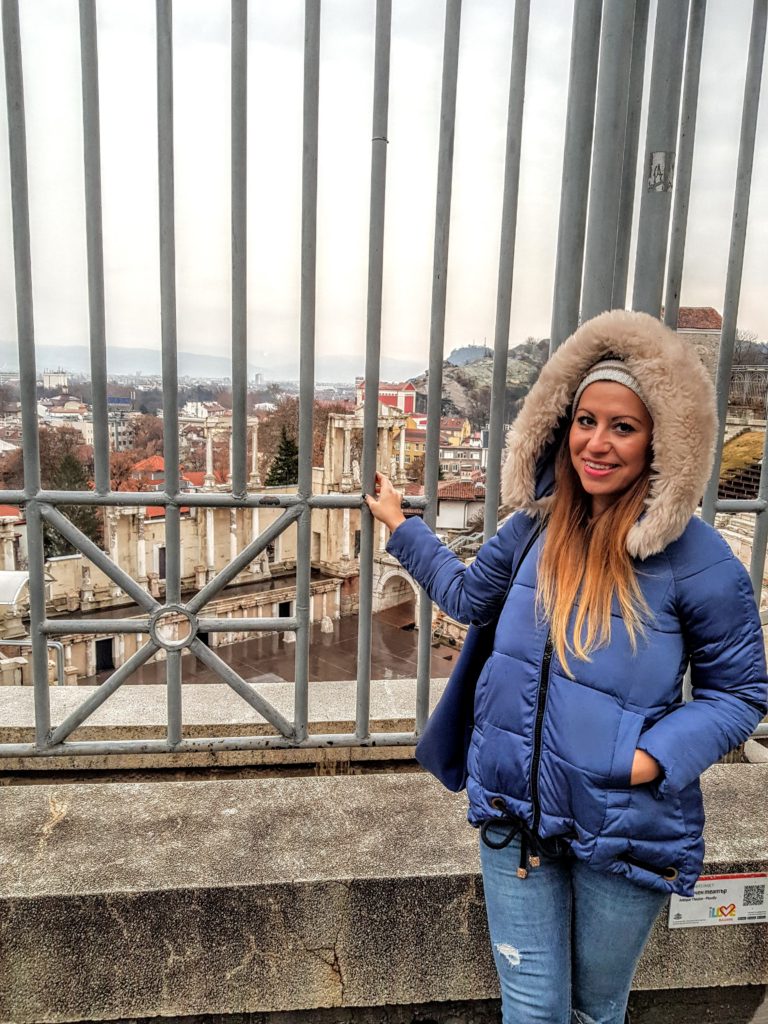
2. The ancient Roman forum – is a rectangular forum (plaza) surrounded by the ruins of several ancient administrative buildings at the center of the city of Plovdiv. It was the center of public, administrative, commercial and religious life in the ancient city. Meetings, discussions, celebrations and state events were held there.
3. The ancient Roman stadium – it is among the largest and best preserved buildings from the time of the Ancient Rome in the Balkan peninsula. The facility, approximately 240 m (790 ft) m long and 50 m wide, could seat up to 30000 spectators. Today, the northern curved part of the stadium is partially restored and is one of the most recognizable landmarks of the city among the many preserved buildings from Roman times.
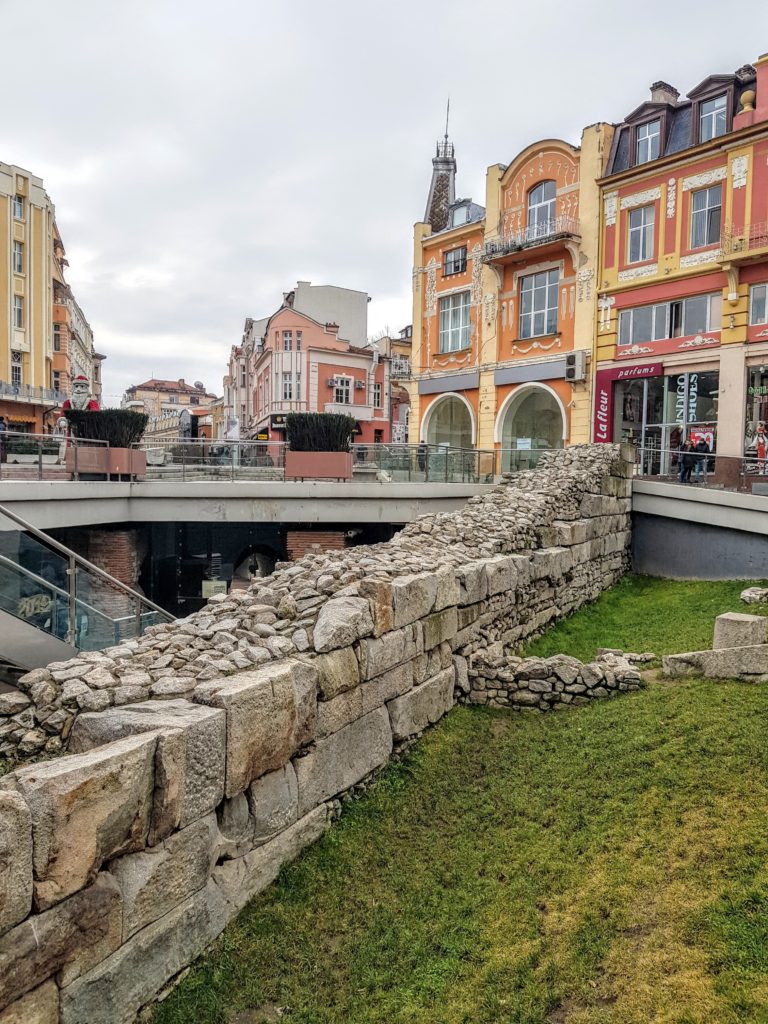
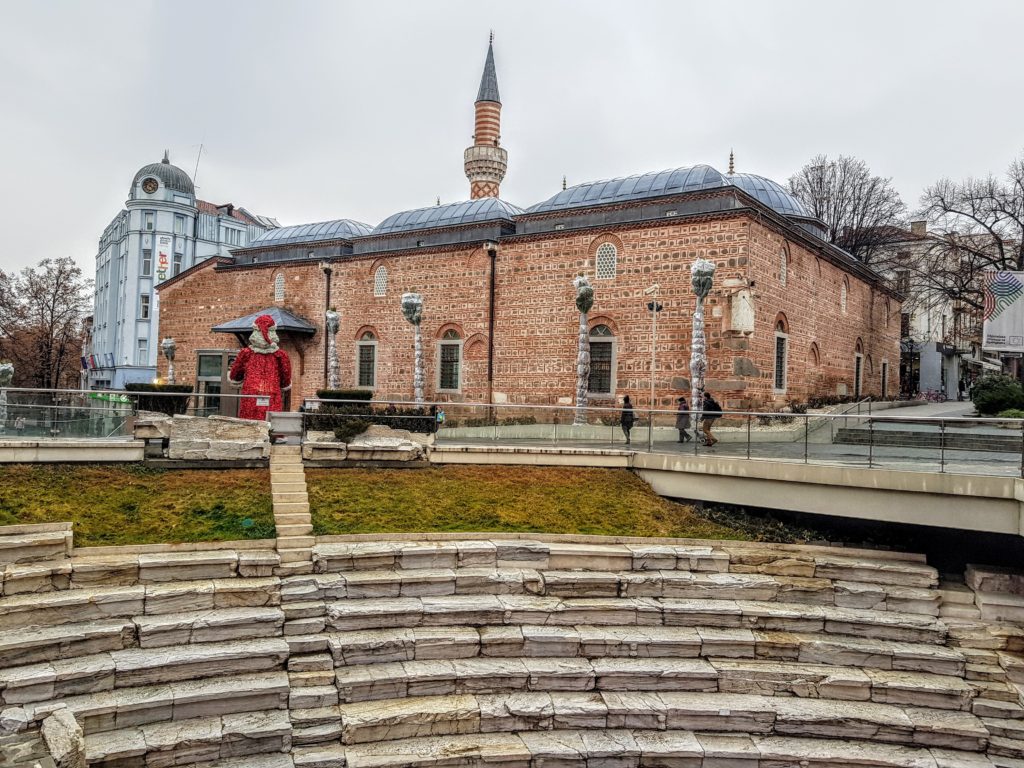
4. The old town – my favorite part! It is an architectural and historical reserve located on three of Plovdiv’s hills: Nebet Tepe, Dzhambaz tepe and Taksim tepe. Several of Plovdiv’s treasures are located in the Old town. Walking around you can feel the ancient Bulgarian spirit, it is like a time travel machine – traditional colorful houses, cobble streets, small craft shops where you can buy traditional handmade souvenirs. Every picture is a postcard there!
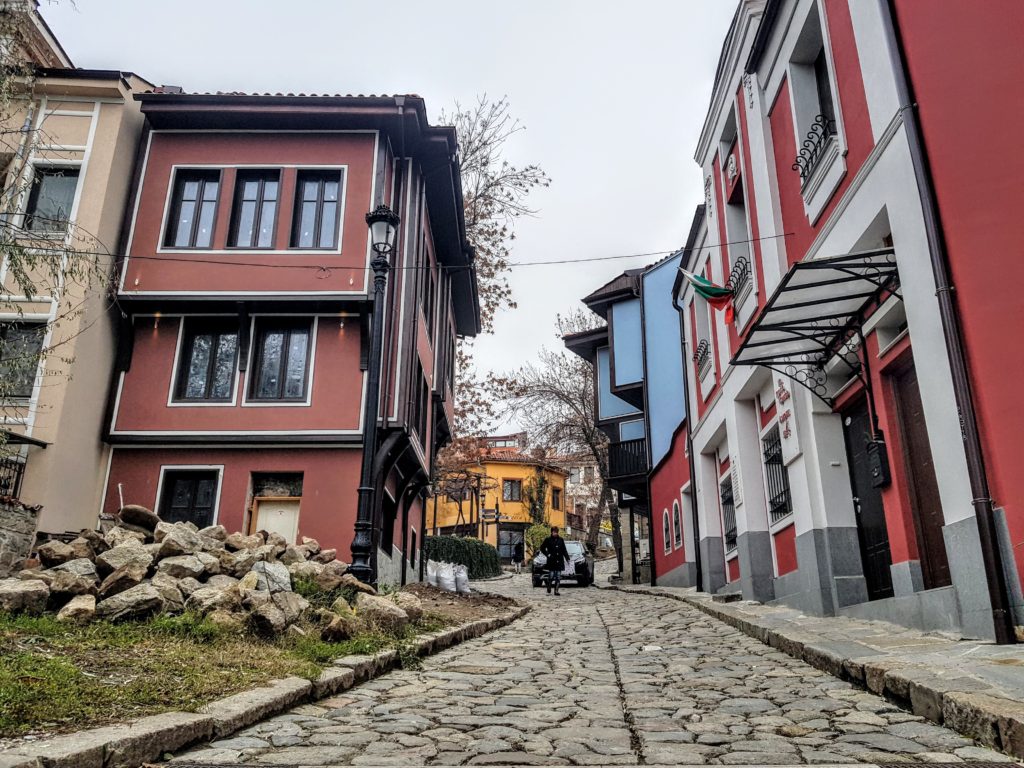
The most famous houses in the Old town are:
- Balabanov House
- Lamartine/Mavridi house
- Hindliyan house
- Kuyumdzhioglu House
- Danov house
- Klianti house
NB. The yards of the houses are open to the public for free. To enter the house you have to pay. Normally the price is around 6lv (3euros) and keep in mind that you will be charged additionally if you want to take pictures.
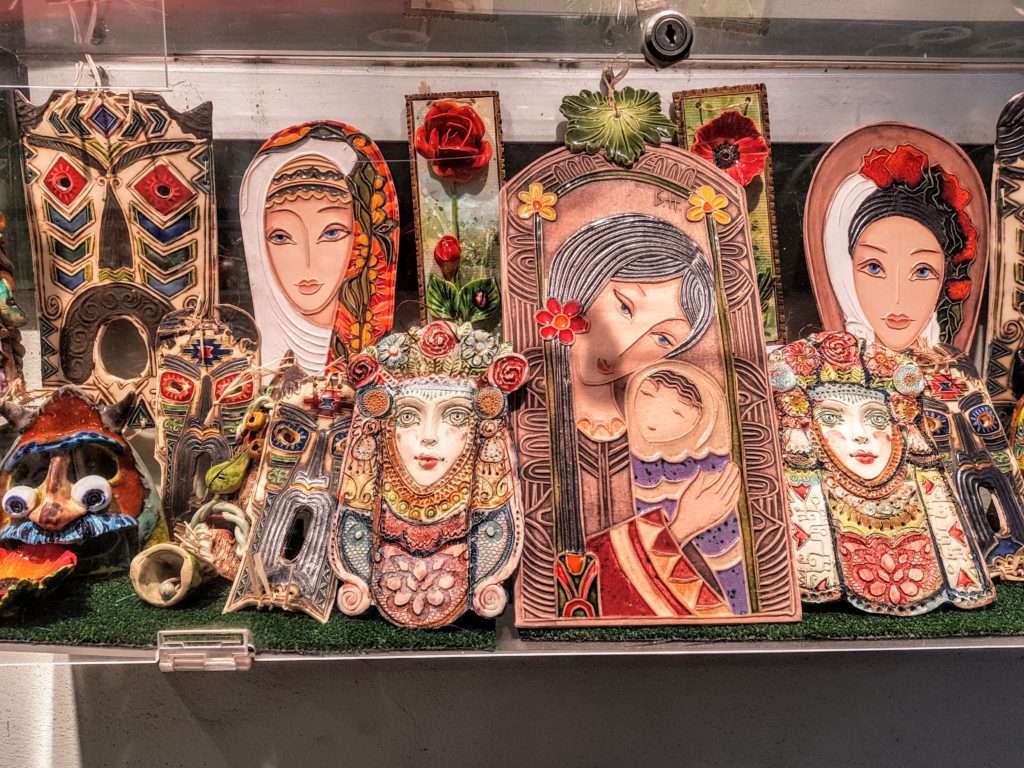
In the Old town are located some other interesting places, such as:
- Hisar Kapiya – a medieval gate
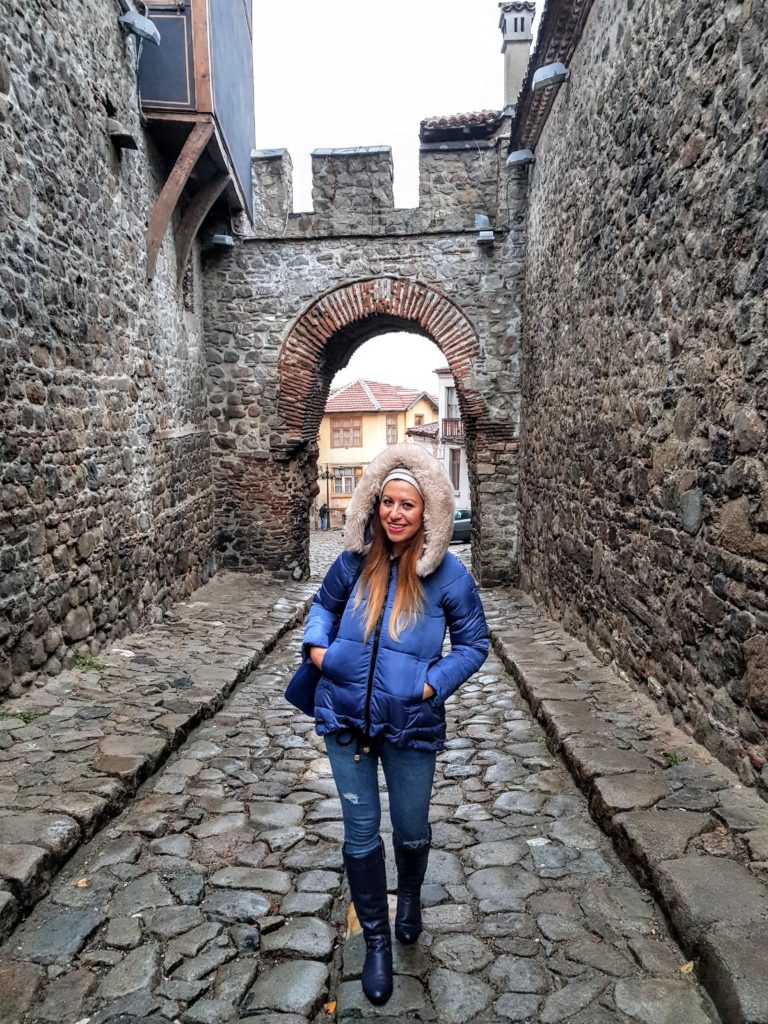
- St. Constantine and Helen church
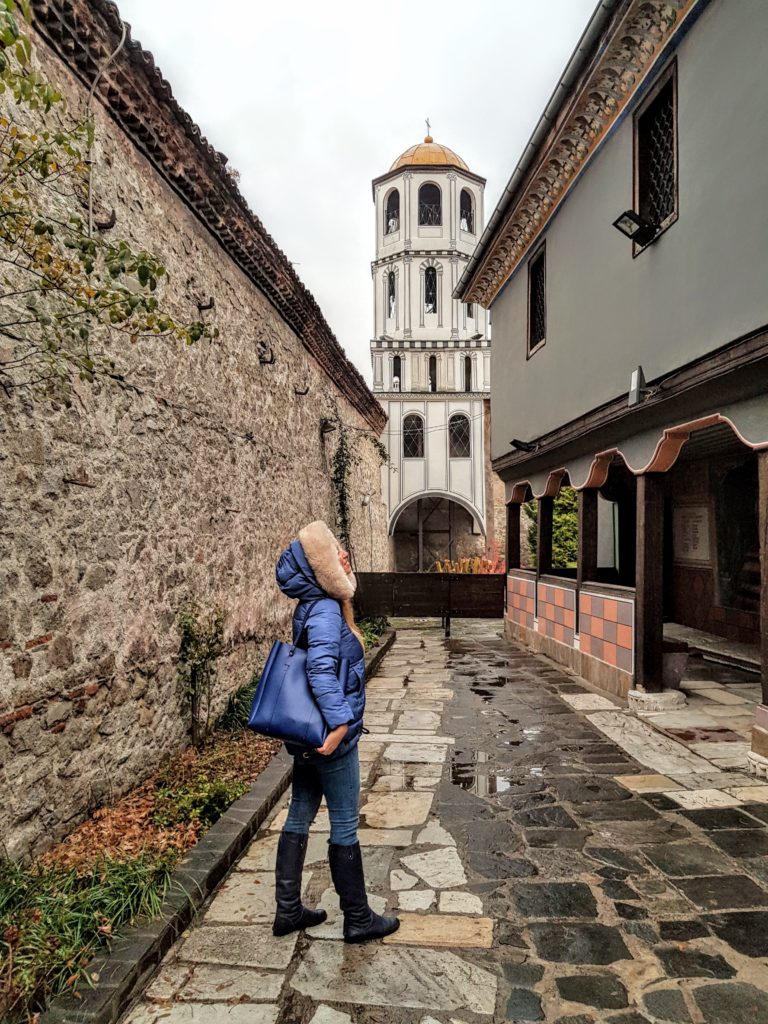
- Nebet tepe
- The Clock tower
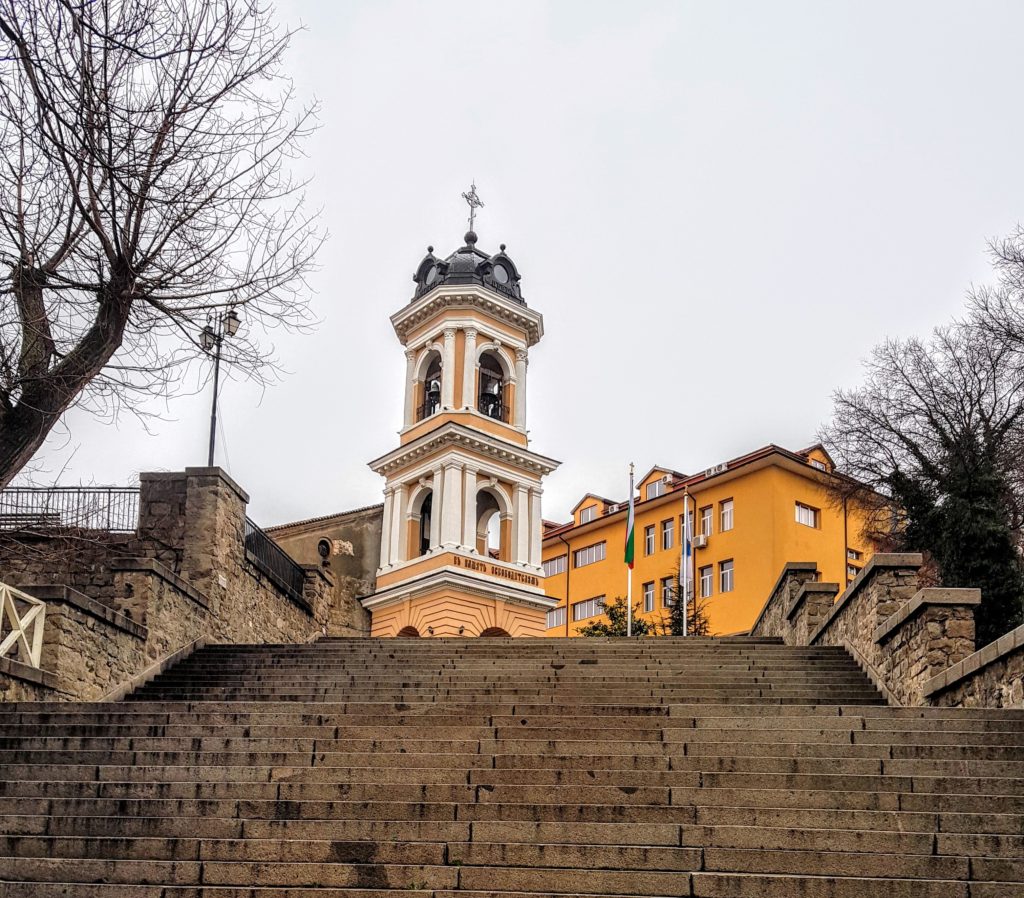
- The Street of Crafts
It is really easy to find everything, because there are so many signs that makes it impossible to get lost.
5. The ethnographic museum – a.k.a Kuyumdzhioglu house. The yards you can visit for free. In case you want to enter the museum and to see how a traditional Bulgarian house looks like you have to pay a small entrance fee (6lv=3euros)
6. The singing fountains – winters in Bulgaria are quite cold so the fountains were closed when I visited the city, but it looks really romantic during summer time. The fountains are located in Tsar Simeon garden
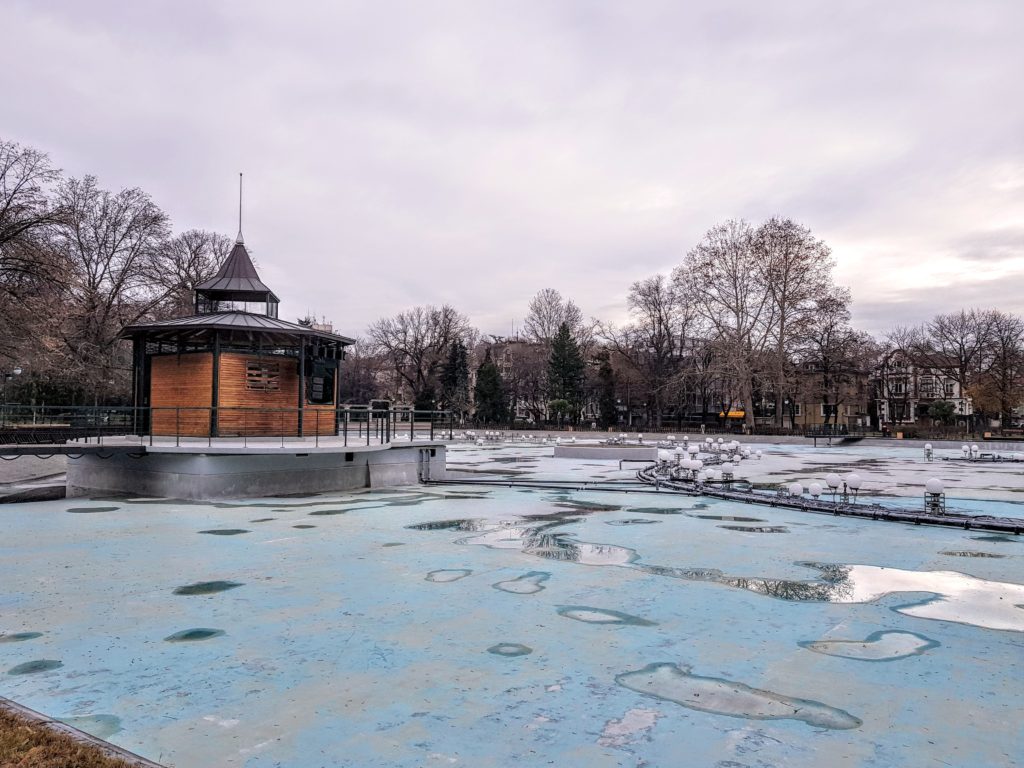
7. Tsar Simeon garden – it is a beautiful park located close to the beginning of the Main pedestrian street. It is a nice place for peaceful walks.
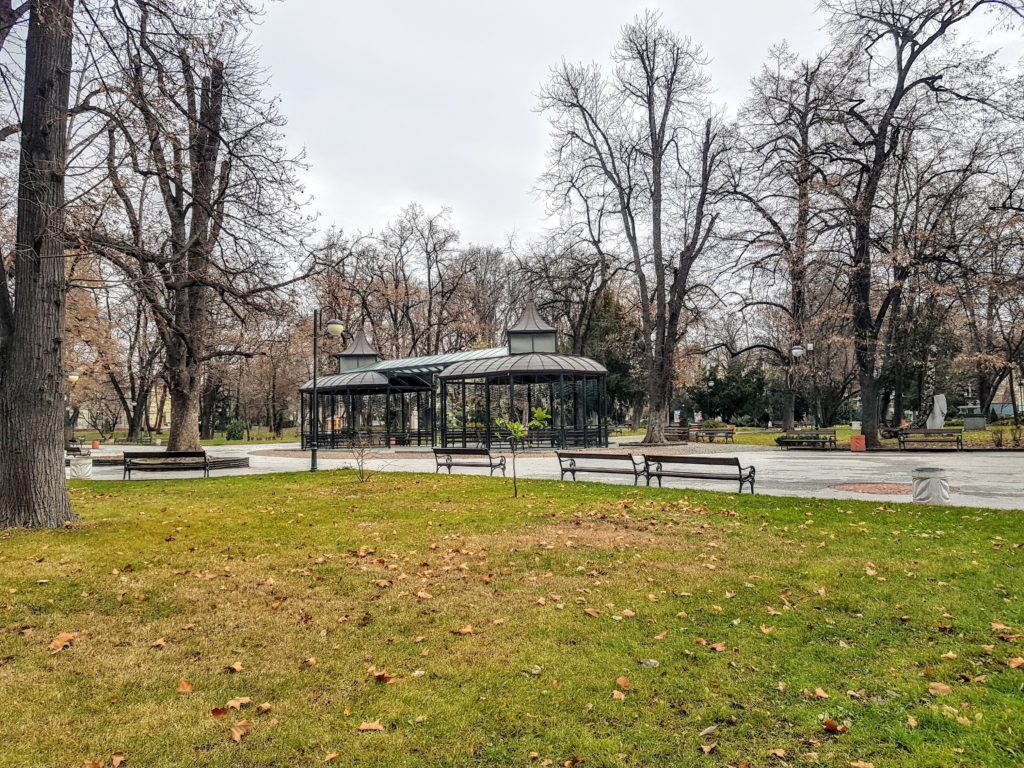
8. Nebet tepe (Nebet hill) – one of Plovdiv’s seven hills. It is located in the old town and gives an outstanding view towards the city. There are remains of a fortress walls, towers, and a postern from the time of Justinian leading down to the Maritsa river.
9. The Main street – or Glavnata ( Главната) as we call it in Bulgarian. This is the main pedestrian street of Plovdiv. In present time, the name of the street is “Knyaz Alexander Battenberg I”, but everybody calls it just the Main Street. It is divided in two – the big and the small Main Street. You can see preserved authentic buildings from different Bulgarian eras and also find many places for entertainment. When you take a walk by it, look up! You’ll be amazed how many small and fine details the buildings have.
10. Dzumaya mosque – The mosque is located in the centre of Plovdiv and was built in 1363–1364 on the site of the Sveta Petka Tarnovska Cathedral Church after the conquest of Plovdiv by the Ottoman army. During the reign of Sultan Murad I in the 15th century the old building was demolished and replaced by the modern-day mosque. It was called Ulu Dzhumaya Mosque, or Main Friday Mosque.
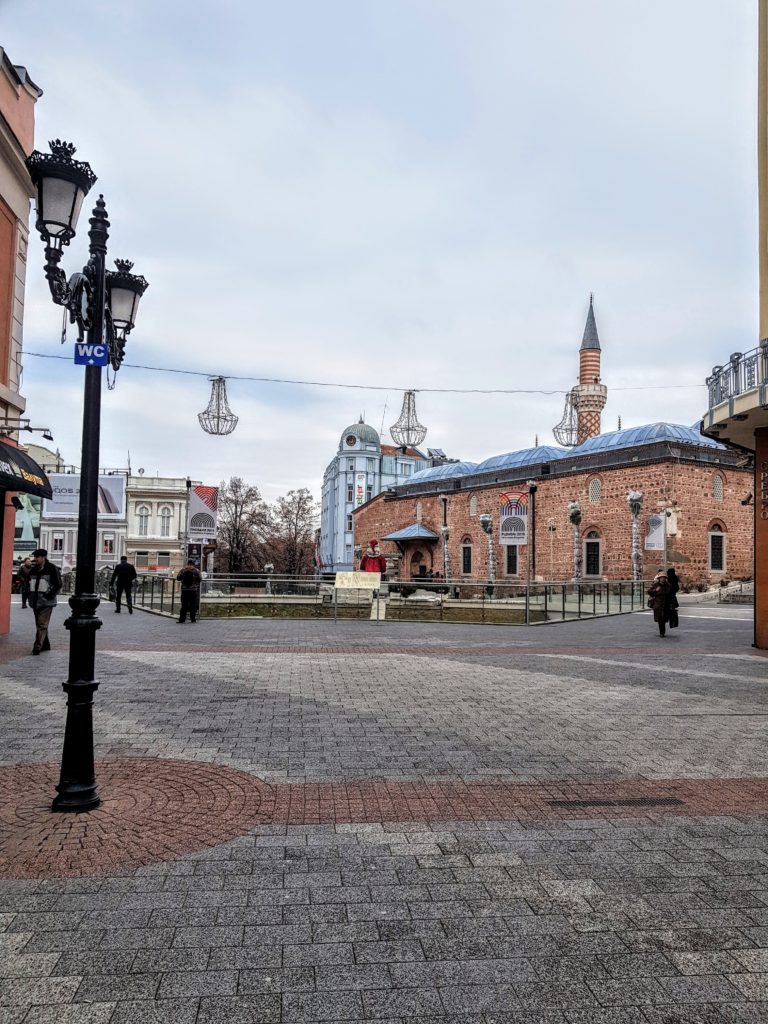
11. Kapana creative district – it means “the Trap” in Bulgarian. It is a district located between the new and the old part of the city. You can become part of the concentration of galleries, studios, workshops, pedestrian street spaces, bars and restaurants. The initiative “Kapana Creative District”is developed by “Plovdiv 2019” Foundation. The project is really successful and nowadays the place is full of locals and tourists.
12. The statue of Milyo the Crazy – it is situated on the main pedestrian downtown street in Plovdiv. It was made to commemorate the real character Milyo who lived in the city. The urban legend says that he was an easy-going, smart guy who could speak several foreign languages. He used to hang out in the downtown area, knew and spread all the rumors. Till one day, some allege he got crazy due to the lots of books he used to read, while others say that he got sick of meningitis which made him crazy.
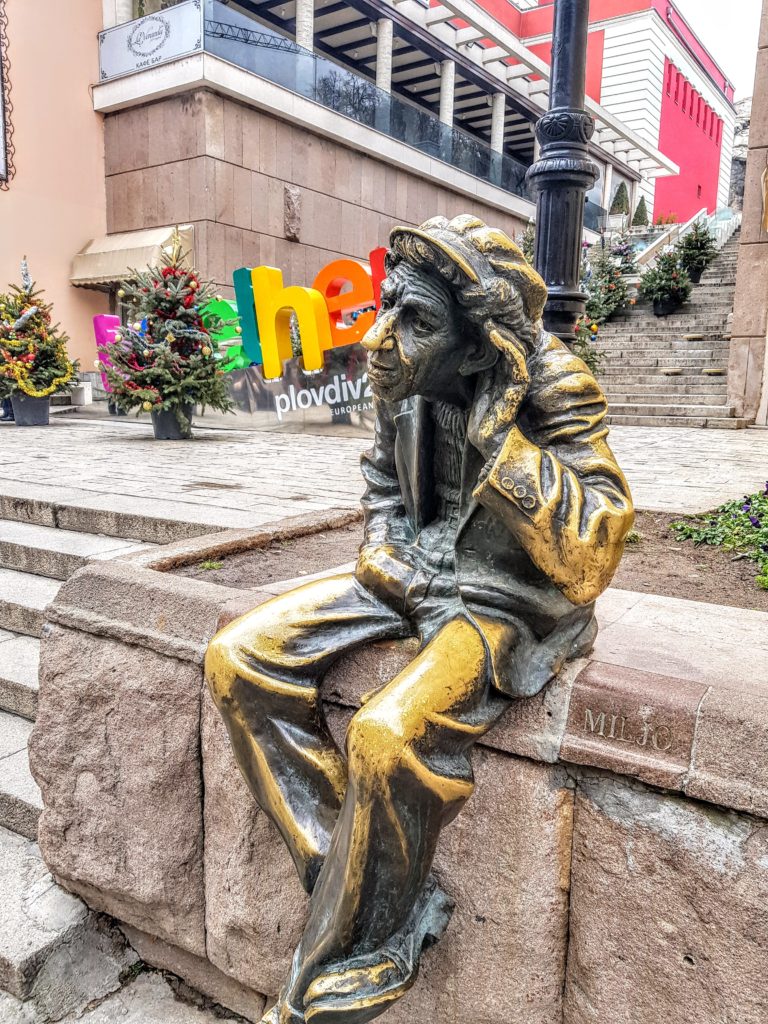
Everything is located really close one to another so it is easy to visit everything for a day.
Plovdiv also has amazing night life and many traditional places where you can taste traditional Bulgarian cuisine. Here is my list of recommendations for bars and restaurants I have visited and I really liked. There are many many more, so feel free to explore on your own.
- Restaurant Joana – traditional Bulgarian restaurant. Offers delicious food and typical traditional environment.
- Restaurant Dayana – it is actually a chain (Joana is also part of this chain), so you can find several places around the town. The food is also super delicious – traditional local dishes.
- Restaurant Torro Grande – this place is a bit more modern. Offers mix of Bulgarian and Mediterranean cuisine.
- Club Planet Dolce Vita – one of the trendiest party places in town.
- Pasha club – another night life jewel.
- Kapana fest – in the creative district Kapana you can find many really nice bars for drinks.
Even though my stay was extremely short this time, I enjoy every time I visit the city. If you visit Bulgaria, don’t limit yourself to visiting Sofia only, there are plenty other places that worth visiting way more and Plovdiv is one of them.
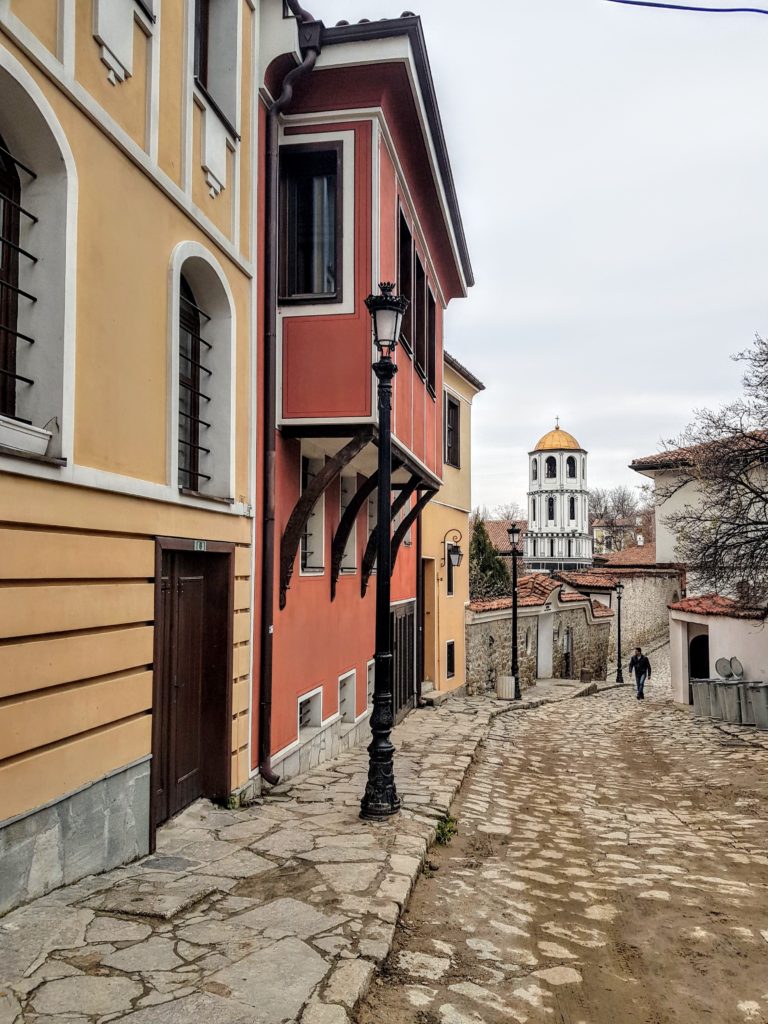
See you soon when Travelista goes to…
P.S. If you want to visit the third biggest Bulgarian city, called Varna – this article is just for you!
